Application of Eye Tracking Technology in Aviation, Maritime, and Construction Industries: A Systematic Review
Abstract
1. Introduction
1.1. Eye Tracking in High-Risk Industries
1.2. Purpose and Objectives
- To perform a demographic analysis to identify the main countries that are using eye tracking research with applications in aviation, maritime, and construction fields;
- To identify the main applications of eye tracking research in the aviation, maritime, and construction industries;
- To identify the different human aspects that are studied in eye tracking research in aviation, maritime and construction scenarios;
- To identify the technologies that are integrated with eye tracking devices to study the different human aspects in aviation, maritime, and construction scenarios; and
- To determine research gaps in the development and application of eye tracking technologies within the aviation, maritime, and construction industries.
2. Materials and Methods
2.1. Selection Criteria
2.2. Data Extraction and Analysis
3. Results
3.1. Demographics
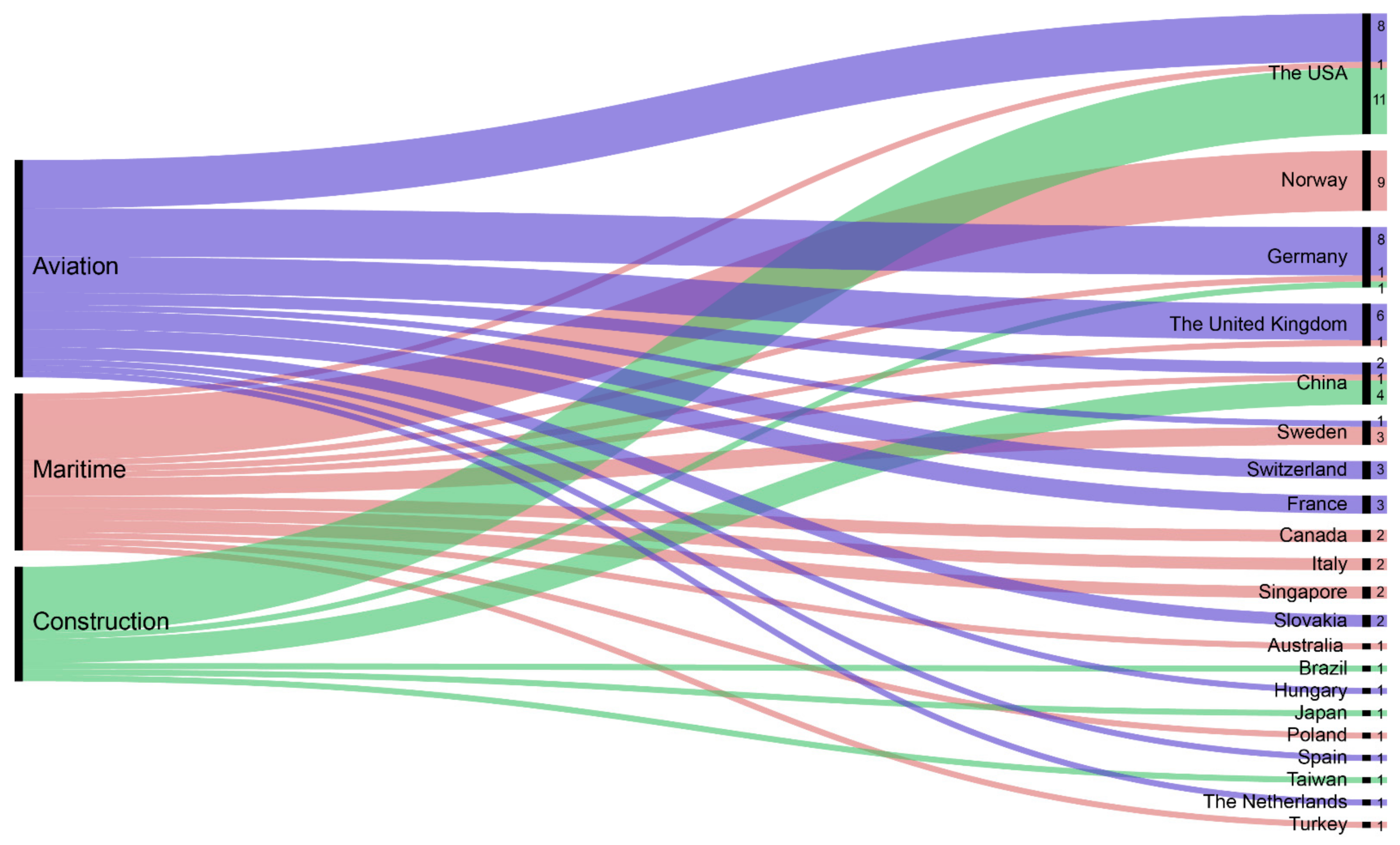
3.2. Eye Tracking Metrics
3.2.1. Fixation
3.2.2. Saccades
3.2.3. Pupil Size
3.2.4. Blink Rate
3.3. Eye Tracking Data Visualisation Tools
3.4. Overview of Types of Eye Tracking Methods
3.5. Types of Modern Video-Based Eye Tracking Devices
3.5.1. Mobile Eye Tracking Devices
3.5.2. Remote Eye Tracking Systems
3.5.3. Eye Tracker Performance and Data Quality
3.5.4. Types of Eye Tracking Devices Used in Aviation, Maritime, and Construction
3.6. Application of Eye Tracking Technology in Aviation, Maritime, and Construction Scenarios
3.6.1. Visual Attention and Gaze Pattern
3.6.2. Mental Workload
3.6.3. Human–Machine Interfaces
3.6.4. Situation Awareness
3.6.5. Training Improvement
3.6.6. Hazard Identification
3.6.7. Comparison between Novices and Experts
3.6.8. Fatigue
3.6.9. Stress and Anxiety
3.6.10. Foretelling
3.6.11. Trust
3.6.12. Working Memory Load
3.7. Integrating Eye Tracking and Other Technologies for Evaluating Human Factors
3.7.1. Simulators
3.7.2. Video and Audio Recording
3.7.3. Head Tracking Systems
3.7.4. Electroencephalography and Electrocardiography Technologies
3.7.5. Body Pressure Mapping and EMG Systems
3.7.6. Computer Vision
3.7.7. Augmented Reality and Virtual Reality
3.7.8. Motion Capture
3.7.9. Face Recognition
4. Discussion
4.1. Gaps in Application
4.2. Gaps in Human Aspects
4.3. Gaps in Technology Integration
4.4. Gaps in Types of Eye Trackers Used
5. Conclusions
Author Contributions
Funding
Institutional Review Board Statement
Informed Consent Statement
Data Availability Statement
Acknowledgments
Conflicts of Interest
References
- Grote, G. Safety management in different high-risk domains—All the same? Saf. Sci. 2012, 50, 1983–1992. [Google Scholar] [CrossRef]
- Hudson, P. Applying the lessons of high risk industries to health care. Qual. Saf. Health Care 2003, 12, i7–i12. [Google Scholar] [CrossRef]
- Amiri, M.; Ardeshir, A.; Fazel Zarandi, M.H.; Soltanaghaei, E. Pattern extraction for high-risk accidents in the construction industry: A data-mining approach. Int. J. Inj. Contr. Saf. Promot. 2016, 23, 264–276. [Google Scholar] [CrossRef]
- Hasanzadeh, S.; Esmaeili, B.; Dodd, M.D. Measuring construction workers’ real-time situation awareness using mobile eye-tracking. In Proceedings of the Construction Research Congress, San Juan, Puerto Rico, 31 May–2 June 2016; pp. 2894–2904. [Google Scholar] [CrossRef]
- Muehlethaler, C.M.; Knecht, C.P. Situation Awareness Training for General Aviation Pilots using Eye Tracking. IFAC PapersOnLine 2016, 49, 66–71. [Google Scholar] [CrossRef]
- Li, G.; Mao, R.; Hildre, H.P.; Zhang, H. Visual Attention Assessment for Expert-in-the-loop Training in a Maritime Operation Simulator. IEEE Trans. Ind. Informat. 2019, 16, 522–531. [Google Scholar] [CrossRef]
- Xinyao, G.; Yawei, L.; Qingmin, S.; Linqing, N.; Huibin, J. Measuring the situation awareness of tower controllers by using eye movement analysis. J. Eng. Sci. Technol. Rev. 2020, 13, 133–140. [Google Scholar] [CrossRef]
- Di Nocera, F.; Mastrangelo, S.; Colonna, S.P.; Steinhage, A.; Baldauf, M.; Kataria, A. Mental workload assessment using eye-tracking glasses in a simulated maritime scenario. In Proceedings of the Human Factors Ergonomics Society Europe, Groningen, The Netherlands, 14–16 October 2015; pp. 14–16. [Google Scholar]
- Cheng, C.-W.; Leu, S.-S.; Lin, C.-C.; Fan, C. Characteristic analysis of occupational accidents at small construction enterprises. Saf. Sci. 2010, 48, 698–707. [Google Scholar] [CrossRef]
- Dzeng, R.-J.; Lin, C.-T.; Fang, Y.-C. Using eye-tracker to compare search patterns between experienced and novice workers for site hazard identification. Saf. Sci. 2016, 82, 56–67. [Google Scholar] [CrossRef]
- Benito, G.R.G.; Berger, E.; de la Forest, M.; Shum, J. A cluster analysis of the maritime sector in Norway. Int. J. Transp. Manag. 2003, 1, 203–215. [Google Scholar] [CrossRef]
- Woo, M. Eyes hint at hidden mental-health conditions. Nature 2019. [Google Scholar] [CrossRef]
- Miranda, S.B.; Hack, M.; Fantz, R.L.; Fanaroff, A.A.; Klaus, M.H. Neonatal pattern vision: A predictor of future mental performance? J. Pediatr. 1977, 91, 642–647. [Google Scholar] [CrossRef]
- Peißl, S.; Wickens, C.D.; Baruah, R. Eye-tracking measures in aviation: A selective literature review. Int. J. Aerosp. Psychol. 2018, 28, 98–112. [Google Scholar] [CrossRef]
- Duchowski, A.T. A breadth-first survey of eye-tracking applications. BMR 2002, 34, 455–470. [Google Scholar] [CrossRef]
- Pinheiro, R.; Pradhananga, N.; Jianu, R.; Orabi, W. Eye-tracking technology for construction safety: A feasibility study. In Proceedings of the ISARC—International Symposium on Automation and Robotics in Construction, Auburn, AL, USA, 18–21 July 2016; pp. 282–290. [Google Scholar]
- Rayner, K. Eye movements in reading and information processing: 20 years of research. Psychol. Bull. 1998, 124, 372. [Google Scholar] [CrossRef]
- Jankovics, I.; Kale, U.; Rohacs, J.; Rohacs, D. Developing ATCOs ‘Support System: Load Management, Integrated Sensors and Eye Tracking. Int. J. Mech. Aerosp. Eng. 2017, 3, 25–42. [Google Scholar]
- Yousefi, M.V.; Karan, E.; Mohammadpour, A.; Asadi, S. Implementing eye tracking technology in the construction process. In Proceedings of the 51st ASC Annual International Conference, College Station, TX, USA, 22–25 April 2015; pp. 752–759. [Google Scholar]
- Chetwood, A.S.; Kwok, K.-W.; Sun, L.-W.; Mylonas, G.P.; Clark, J.; Darzi, A.; Yang, G.-Z. Collaborative eye tracking: A potential training tool in laparoscopic surgery. Surg. Endosc. 2012, 26, 2003–2009. [Google Scholar] [CrossRef]
- Van Der Gijp, A.; Ravesloot, C.; Jarodzka, H.; Van der Schaaf, M.; Van der Schaaf, I.; van Schaik, J.P.; Ten Cate, T.J. How visual search relates to visual diagnostic performance: A narrative systematic review of eye-tracking research in radiology. Adv. Health Sci. Educ. Theory Pract. 2017, 22, 765–787. [Google Scholar] [CrossRef]
- Menezes, P.; Francisco, J.; Patrão, B. The Importance of Eye-Tracking Analysis in Immersive Learning—A Low Cost Solution. In Online Engineering & Internet of Things, Proceedings of the 14th International Conference on Remote Engineering and Virtual Instrumentation, New York, NY, USA, 15–17 March 2017; Columbia University: New York, NY, USA, 2018; pp. 689–697. [Google Scholar]
- Habibnezhad, M.; Fardhosseini, S.; Vahed, A.M.; Esmaeili, B.; Dodd, M.D. The relationship between construction workers’ risk perception and eye movement in hazard identification. In Proceedings of the Construction Research Congress 2016, San Juan, Puerto Rico, 31 May–2 June 2016; pp. 2984–2994. [Google Scholar]
- Fadda, P.; Meloni, M.; Fancello, G.; Pau, M.; Medda, A.; Pinna, C.; Del Rio, A.; Lecca, L.I.; Setzu, D.; Leban, B. Multidisciplinary Study of Biological Parameters and Fatigue Evolution in Quay Crane Operators. Procedia Manuf. 2015, 3, 3301–3308. [Google Scholar] [CrossRef]
- Heikoop, D.D.; de Winter, J.C.; van Arem, B.; Stanton, N.A. Effects of platooning on signal-detection performance, workload, and stress: A driving simulator study. Appl. Ergon. 2017, 60, 116–127. [Google Scholar] [CrossRef]
- Li, W.-C.; Zhang, J.; Le Minh, T.; Cao, J.; Wang, L. Visual scan patterns reflect to human-computer interactions on processing different types of messages in the flight deck. Int. J. Ind. Ergon. 2019, 72, 54–60. [Google Scholar] [CrossRef]
- Yan, S.; Wei, Y.; Tran, C.C. Evaluation and prediction mental workload in user interface of maritime operations using eye response. Int. J. Ind. Ergon. 2019, 71, 117–127. [Google Scholar] [CrossRef]
- Liberati, A.; Altman, D.G.; Tetzlaff, J.; Mulrow, C.; Gøtzsche, P.C.; Ioannidis, J.P.; Clarke, M.; Devereaux, P.J.; Kleijnen, J.; Moher, D. The PRISMA statement for reporting systematic reviews and meta-analyses of studies that evaluate health care interventions: Explanation and elaboration. Ann. Intern. Med. 2009, 151, W-65–W-94. [Google Scholar] [CrossRef]
- Lützhöft, M.; Dukic, T. Show me where you look and I’ll tell you if you’re safe: Eye tracking of maritime watchkeepers. In Proceedings of the 39th Nordic Ergonomics Society Conference, Lysekil, Sweden, 1–3 October 2007; pp. 75–78. [Google Scholar]
- Arenius, M.; Athanassiou, G.; Sträter, O. Systemic assessment of the effect of mental stress and strain on performance in a maritime ship-handling simulator. IFAC Proc. Vol. 2010, 43, 43–46. [Google Scholar] [CrossRef]
- Bjørneseth, F.B.; Renganayagalu, S.K.; Dunlop, M.D.; Hornecker, E.; Komandur, S. Towards an experimental design framework for evaluation of dynamic workload and situational awareness in safety critical maritime settings. In Proceedings of the 26th BCS Conference on Human Computer Interaction, Birmingham, UK, 12–16 September 2016; pp. 309–314. [Google Scholar] [CrossRef]
- Forsman, F.; Sjörs-Dahlman, A.; Dahlman, J.; Falkmer, T.; Lee, H.C. Eye tracking during high speed navigation at sea: Field trial in search of navigational gaze behaviour. J. Transp. Technol. 2012, 2, 277–283. [Google Scholar]
- Muczyński, B.; Gucma, M.; Bilewski, M.; Zalewski, P. Using eye tracking data for evaluation and improvement of training process on ship’s navigational bridge simulator. Sci. J. Marit. Univ. Szczec. 2013, 33, 75–78. [Google Scholar]
- Bjørneseth, F.B.; Clarke, L.; Dunlop, M.; Komandur, S. Towards an understanding of operator focus using eye-tracking in safety-critical maritime settings. In Proceedings of the International Conference on Human Factors in Ship Design & Operation, London, UK, 26–27 February 2014. [Google Scholar]
- Moore, L.J.; Vine, S.J.; Smith, A.N.; Smith, S.J.; Wilson, M.R.J.M.P. Quiet eye training improves small arms maritime marksmanship. Mil. Psychol. 2014, 26, 355–365. [Google Scholar] [CrossRef]
- Hodgetts, H.M.; Tremblay, S.; Vallières, B.R.; Vachon, F. Decision support and vulnerability to interruption in a dynamic multitasking environment. Int. J. Hum. Comput. Stud. 2015, 79, 106–117. [Google Scholar] [CrossRef]
- Hong, T.C.; Andrew, H.S.Y.; Kenny, C.W.L. Assessing the situation awareness of operators using maritime augmented reality system (MARS). In Proceedings of the Human Factors and Ergonomics Society Annual Meeting, Los Angeles, CA, USA, 26–30 October 2015; pp. 1722–1726. [Google Scholar] [CrossRef]
- Peysakhovich, V.; Vachon, F.; Vallières, B.R.; Dehais, F.; Tremblay, S. Pupil dilation and eye movements can reveal upcoming choice in dynamic decision-making. In Proceedings of the Human Factors and Ergonomics Society Annual Meeting, Los Angeles, CA, USA, 26–30 October 2015; pp. 210–214. [Google Scholar] [CrossRef]
- Hareide, O.S.; Ostnes, R.; Mjelde, F.V. Understanding the eye of the navigator. In Proceedings of the European Navigation Conference, Helsinki, Finland, 30 May–2 June 2016. [Google Scholar]
- Hareide, O.S.; Ostnes, R. Comparative study of the Skjold-class bridge- and simulator navigation training. Eur. J. Navig. 2016, 14, 11. [Google Scholar]
- Sanfilippo, F. A multi-sensor fusion framework for improving situational awareness in demanding maritime training. Reliab. Eng. Syst. Saf. 2017, 161, 12–24. [Google Scholar] [CrossRef]
- Keller, M.D.; Ziriax, J.M.; Barns, W.; Sheffield, B.; Brungart, D.; Thomas, T.; Jaeger, B.; Yankaskas, K. Performance in noise: Impact of reduced speech intelligibility on Sailor performance in a Navy command and control environment. Hear. Res. 2017, 349, 55–66. [Google Scholar] [CrossRef] [PubMed]
- Hareide, O.S.; Ostnes, R. Maritime usability study by analysing eye tracking data. J. Navig. 2016, 70, 1–17. [Google Scholar] [CrossRef]
- Hareide, O.S.; Mjelde, F.V.; Glomsvoll, O.; Ostnes, R. Developing a high-speed craft route monitor window. In Augmented Cognition. Enhancing Cognition and Behavior in Complex Human Environments. Proceedings of the International Conference on Augmented Cognition, Vancoucer, BC, Canada, 9–14 July 2017; Schmorrow, D., Fidopiastis, C., Eds.; Lecture Notes in Computer Science; Springer: Cham, Switzerland, 2017; Volume 10285. [Google Scholar] [CrossRef]
- Orlandi, L.; Brooks, B. Measuring mental workload and physiological reactions in marine pilots: Building bridges towards redlines of performance. Appl. Ergon. 2018, 69, 74–92. [Google Scholar] [CrossRef]
- Hareide, O.S.; Ostnes, R. Validation of a maritime usability study with eye tracking data. In Proceedings of the International Conference on Augmented Cognition, Las Vegas, NV, USA, 15–20 July 2018; pp. 273–292. [Google Scholar] [CrossRef]
- Costa, N.A.; Jakobsen, J.J.; Weber, R.; Lundh, M.; MacKinnon, S.N. Assessing a maritime service website prototype in a ship bridge simulator: Navigators’ experiences and perceptions of novel e-Navigation solutions. J. Marit. Aff. 2018, 17, 521–542. [Google Scholar] [CrossRef]
- Li, F.; Chen, C.-H.; Xu, G.; Khoo, L.P.; Liu, Y. Proactive mental fatigue detection of traffic control operators using bagged trees and gaze-bin analysis. Adv. Eng. Inform. 2019, 42, 100987. [Google Scholar] [CrossRef]
- Atik, O.; Arslan, O. Use of eye tracking for assessment of electronic navigation competency in maritime training. J. Eye Mov. Res. 2019, 12. [Google Scholar] [CrossRef]
- Colvin, K.; Dodhia, R.M.; Belcher, S.; Dismukes, R. Scanning for visual traffic: An eye tracking study. In Proceedings of the 12th International Symposium on Aviation Psychology, Dayton, OH, USA, 14–17 April 2003. [Google Scholar]
- Thomas, L.C.; Wickens, C.D. Eye-tracking and individual differences in off-normal event detection when flying with a synthetic vision system display. In Proceedings of the Human Factors and Ergonomics Society Annual Meeting, New Orleans, LA, USA, 20–24 September 2004; pp. 223–227. [Google Scholar] [CrossRef]
- Wilson, J.; Hooey, B.L.; Foyle, D.C. Head-up display symbology for surface operations: Eye tracking analysis of command-guidance vs. situation-guidance formats. In Proceedings of the 13th International Symposium on Aviation Psychology, Oklahoma City, OK, USA, 18–21 April 2005; p. 835. [Google Scholar]
- Björklund, C.M.; Alfredson, J.; Dekker, S.W.A. Mode monitoring and call-outs: An eye-tracking study of two-crew automated flight deck operations. Int. J. Aviat. Psychol. 2006, 16, 263–275. [Google Scholar] [CrossRef][Green Version]
- Sarter, N.B.; Mumaw, R.J.; Wickens, C.D. Pilots’ monitoring strategies and performance on automated flight decks: An empirical study combining behavioral and eye-tracking data. Hum. Factors 2007, 49, 347–357. [Google Scholar] [CrossRef]
- Hasse, C.; Bruder, C.; Grasshoff, D.; Eißfeldt, H. Future ability requirements for human operators in aviation. In Proceedings of the International Conference on Engineering Psychology and Cognitive Ergonomics, San Diego, CA, USA, 19–24 July 2009; pp. 537–546. [Google Scholar] [CrossRef]
- Martin, C.; Cegarra, J.; Averty, P. Analysis of mental workload during en-route air traffic control task execution based on eye-tracking technique. In Proceedings of the 9th International Conference on Engineering Psychology and Cognitive Ergonomics, Orlando, FL, USA, 9–14 July 2011; pp. 592–597. [Google Scholar]
- Wang, L.; Sun, R. Study of fatigue measurement based on eye tracking technique. In Proceedings of the ICTIS 2011: Multimodal Approach to Sustained Transportation System Development: Information, Technology, Implementation, Wuhan, China, 30 June–2 July 2011; pp. 1723–1729. [Google Scholar]
- Weibel, N.; Fouse, A.; Emmenegger, C.; Kimmich, S.; Hutchins, E. Let’s look at the cockpit: Exploring mobile eye-tracking for observational research on the flight deck. In Proceedings of the Symposium on Eye Tracking Research and Applications, Santa Barbara, CA, USA, 28–30 March 2012; pp. 107–114. [Google Scholar] [CrossRef]
- Hasse, C.; Grasshoff, D.; Bruder, C. Eye-tracking parameters as a predictor of human performance in the detection of automation failures. In Proceedings of the Human Factors: A View from an Integrative Perspective, Toulouse, France, 10–11 October 2012. [Google Scholar]
- Moacdieh, N.M.; Prinet, J.C.; Sarter, N.B. Effects of modern primary flight display clutter: Evidence from performance and eye tracking data. In Proceedings of the Human Factors and Ergonomics Society Annual Meeting, Perth, Australia, 2–4 December 2013. [Google Scholar] [CrossRef]
- Robinski, M.; Stein, M. Tracking visual scanning techniques in training simulation for helicopter landing. J. Eye Mov. Res. 2013, 6. [Google Scholar] [CrossRef]
- van Meeuwen, L.W.; Jarodzka, H.; Brand-Gruwel, S.; Kirschner, P.A.; de Bock, J.J.P.R.; van Merriënboer, J.J.G. Identification of effective visual problem solving strategies in a complex visual domain. Learn Instr. 2014, 32, 10–21. [Google Scholar] [CrossRef]
- Allsop, J.; Gray, R. Flying under pressure: Effects of anxiety on attention and gaze behavior in aviation. J. Appl. Res. Mem. Cogn. 2014, 3, 63–71. [Google Scholar] [CrossRef]
- Stankovic, A.; Aitken, M.R.F.; Clark, L. An eye-tracking study of information sampling and decision-making under stress: Implications for alarms in aviation emergencies. In Proceedings of the Human Factors and Ergonomics Society Annual Meeting, Chicago, IL, USA, 27–31 October 2014; Volume 58, pp. 125–129. [Google Scholar] [CrossRef]
- Bruder, C.; Eißfeldt, H.; Maschke, P.; Hasse, C. A model for future aviation: Operators monitoring appropriately. APAHF 2014, 4, 13–22. [Google Scholar] [CrossRef]
- Dill, E.T.; Young, S.D. Analysis of Eye-Tracking Data with Regards to the Complexity of Flight Deck Information Automation and Management—Inattentional Blindness, System State Awareness, and EFB Usage. In Proceedings of the 15th AIAA Aviation Technology, Integration, and Operations Conference, Dallas, TX, USA, 22–26 June 2015; p. 2901. [Google Scholar]
- Dehais, F.; Peysakhovich, V.; Scannella, S.; Fongue, J.; Gateau, T. “Automation surprise” in aviation: Real-time solutions. In Proceedings of the 33rd Annual ACM Conference on Human Factors in Computing Systems, Seoul, Korea, 18–23 April 2015; pp. 2525–2534. [Google Scholar] [CrossRef]
- Vine, S.J.; Uiga, L.; Lavric, A.; Moore, L.J.; Tsaneva-Atanasova, K.; Wilson, M.R. Coping. Individual reactions to stress predict performance during a critical aviation incident. Anxiety Stress Coping 2015, 28, 467–477. [Google Scholar] [CrossRef]
- Hasse, C.; Bruder, C. Eye-tracking measurements and their link to a normative model of monitoring behaviour. Ergonomics 2015, 58, 355–367. [Google Scholar] [CrossRef]
- Li, W.-C.; Lin, J.J.; Braithwaite, G.; Greaves, M. The development of eye tracking in aviation (ETA) technique to investigate pilot’s cognitive processes of attention and decision-making. In Proceedings of the 32nd Conference of the European Association for Aviation Psychology, Cascais, Portugal, 26–30 September 2016. [Google Scholar]
- Dehais, F.; Behrend, J.; Peysakhovich, V.; Causse, M.; Wickens, C.D. Pilot flying and pilot monitoring’s aircraft state awareness during go-around execution in aviation: A behavioral and eye tracking study. Int. J. Aerosp. Psychol. 2017, 27, 15–28. [Google Scholar] [CrossRef]
- Kim, J.H.; Zhao, X.; Du, W. Assessing the performance of visual identification tasks using time window-based eye inter-fixation duration. Int. J. Ind. Ergon. 2018, 64, 15–22. [Google Scholar] [CrossRef]
- Gontar, P.; Homans, H.; Rostalski, M.; Behrend, J.; Dehais, F.; Bengler, K. Are pilots prepared for a cyber-attack? A human factors approach to the experimental evaluation of pilots’ behavior. J. Air Transp. Manag. 2018, 69, 26–37. [Google Scholar] [CrossRef]
- Li, W.-C.; Kearney, P.; Braithwaite, G.; Lin, J.J.H. How much is too much on monitoring tasks? Visual scan patterns of single air traffic controller performing multiple remote tower operations. Int. J. Ind. Ergon. 2018, 67, 135–144. [Google Scholar] [CrossRef]
- Skvarekova, I.; Skultety, F. Objective Measurement of Pilot’s Attention Using Eye Track Technology during IFR Flights. TRPRO 2019, 40, 1555–1562. [Google Scholar] [CrossRef]
- Bruder, C.; Hasse, C. Differences between experts and novices in the monitoring of automated systems. Int. J. Ind. Ergon. 2019, 72, 1–11. [Google Scholar] [CrossRef]
- Diaz-Piedra, C.; Rieiro, H.; Cherino, A.; Fuentes, L.J.; Catena, A.; Di Stasi, L.L. The effects of flight complexity on gaze entropy: An experimental study with fighter pilots. Appl. Ergon. 2019, 77, 92–99. [Google Scholar] [CrossRef] [PubMed]
- Brezonakova, A.; Skvarekova, I.; Pecho, P.; Davies, R.; Bugaj, M.; Kandera, B. The effects of back lit aircraft instrument displays on pilots fatigue and performance. TRPRO 2019, 40, 1273–1280. [Google Scholar] [CrossRef]
- Ryffel, C.P.; Muehlethaler, C.M.; Huber, S.M.; Elfering, A. Eye tracking as a debriefing tool in upset prevention and recovery training (UPRT) for general aviation pilots. Ergonomics 2019, 62, 319–329. [Google Scholar] [CrossRef]
- Rudi, D.; Kiefer, P.; Raubal, M. The instructor assistant system (iASSYST)-utilizing eye tracking for commercial aviation training purposes. Ergonomics 2020, 63, 61–79. [Google Scholar] [CrossRef]
- Behrend, J.; Dehais, F. How role assignment impacts decision-making in high-risk environments: Evidence from eye-tracking in aviation. Saf. Sci. 2020, 127, 104738. [Google Scholar] [CrossRef]
- Mohammadpour, A.; Asadi, S.; Karan, E.; Rothrock, L. Measuring end-user satisfaction in the design of building projects using eye-tracking technology. J. Comput. Civ. Eng. 2015, 564–571. [Google Scholar] [CrossRef]
- Hasanzadeh, S.; Esmaeili, B.; Dodd, M.D. Measuring the Impacts of Safety Knowledge on Construction Workers’ Attentional Allocation and Hazard Detection Using Remote Eye-Tracking Technology. J. Constr. Eng. Manag. 2017, 33, 4017024. [Google Scholar] [CrossRef]
- Hasanzadeh, S.; Esmaeili, B.; Dodd, M.D. Impact of construction workers’ hazard identification skills on their visual attention. J. Constr. Eng. Manag. 2017, 143, 04017070. [Google Scholar] [CrossRef]
- Bhoir, S.A.; Hasanzadeh, S.; Esmaeili, B.; Dodd, M.D.; Fardhosseini, M.A. Measuring construction workers’ attention using eye-tracking technology. In Proceedings of the Canadian Society for Civil Engineering 5th International/11th Construction Specialty Conference, Vancouver, BC, Canada, 8–10 June 2015. [Google Scholar]
- Hasanzadeh, S.; Dao, B.; Esmaeili, B.; Dodd, M.D. Measuring the Impact of Working Memory Load on the Safety Performance of Construction Workers. J. Comput. Civ. Eng. 2017, 158–166. [Google Scholar] [CrossRef]
- Jeelani, I.; Han, K.; Albert, A. Automating and scaling personalized safety training using eye-tracking data. Autom. Constr. 2018, 93, 63–77. [Google Scholar] [CrossRef]
- Chew, J.Y.; Ohtomi, K.; Suzuki, H. Glance behavior as design indices of in-vehicle visual support system: A study using crane simulators. Appl. Ergon. 2018, 73, 183–193. [Google Scholar] [CrossRef]
- Hasanzadeh, S.; Esmaeili, B.; Dodd, M.D. Examining the relationship between construction workers’ visual attention and situation awareness under fall and tripping hazard conditions: Using mobile eye tracking. J. Constr. Eng. Manag. 2018, 144, 04018060. [Google Scholar] [CrossRef]
- Wang, T.-K.; Huang, J.; Liao, P.-C.; Piao, Y. Does augmented reality effectively foster visual learning process in construction? An eye-tracking study in steel installation. Adv. Civ. Eng. 2018. [Google Scholar] [CrossRef]
- Xu, Q.; Chong, H.-Y.; Liao, P.-C. Exploring eye-tracking searching strategies for construction hazard recognition in a laboratory scene. Saf. Sci. 2019, 120, 824–832. [Google Scholar] [CrossRef]
- Li, J.; Li, H.; Wang, H.; Umer, W.; Fu, H.; Xing, X. Evaluating the impact of mental fatigue on construction equipment operators’ ability to detect hazards using wearable eye-tracking technology. Autom. Constr. 2019, 105, 102835. [Google Scholar] [CrossRef]
- Jeelani, I.; Albert, A.; Han, K.; Azevedo, R. Are Visual Search Patterns Predictive of Hazard Recognition Performance? Empirical Investigation Using Eye-Tracking Technology. J. Constr. Eng. Manag. 2019, 145, 4018115. [Google Scholar] [CrossRef]
- Ye, X.; König, M. Applying eye tracking in virtual construction environments to improve cognitive data collection and human-computer interaction of site hazard identification. In Proceedings of the ISARC—International Symposium on Automation and Robotics in Construction, Banff, AB, Canada, 21–24 May 2019; pp. 1073–1080. [Google Scholar] [CrossRef]
- Li, J.; Li, H.; Umer, W.; Wang, H.; Xing, X.; Zhao, S.; Hou, J. Identification and classification of construction equipment operators’ mental fatigue using wearable eye-tracking technology. Autom. Constr. 2020, 109, 103000. [Google Scholar] [CrossRef]
- Petrescu, R.V.; Aversa, R.; Akash, B.; Corchado, J.; Berto, F.; Apicella, A.; Petrescu, F.I. When boeing is dreaming—A review. J. Aircr. Spacecr. Tech. 2017, 1, 13. [Google Scholar]
- Commerce, U.S.D.o. Germany—Aerospace/Defense/Security. Available online: https://www.privacyshield.gov/article?id=Germany-Aerospace-Defense-Security#:~:text=Leading%20Sub%2DSectors,France%20at%20USD%2077.2%20billion.&text=Aerospace%20is%20a%20German%20Government%20priority (accessed on 7 July 2020).
- Pandey, A. Airbus topples Boeing as biggest plane maker. Available online: https://www.dw.com/en/airbus-topples-boeing-as-biggest-plane-maker/a-49536539 (accessed on 3 February 2020).
- Commerce, U.S.D.o. United Kingdom—Aerospace. Available online: https://www.export.gov/apex/article2?id=United-Kingdom-Aerospace#:~:text=The%20UK%20aerospace%20industry%20is,a%2017%25%20global%20market%20share.&text=The%20aerospace%20industry%20is%20a,exports%20in%20the%20United%20Kingdom (accessed on 7 July 2020).
- Benito, G.R.; Berger, E.; de la Forest, M.; Sum, J. Industrial clusters and foreign companies’ centres of excellence in Norway. In The Emergence and Impact of MNC Centres of Excellence: A Subsidiary Perspective; St. Martin’s Press: New York, NY, USA, 2000; pp. 97–112. [Google Scholar]
- Wang, T. US Construction Industry—Statistics & Facts. Available online: https://www.statista.com/topics/974/construction/ (accessed on 7 July 2020).
- Ahmad, M.; Zhao, Z.-Y.; Li, H. Revealing stylized empirical interactions among construction sector, urbanization, energy consumption, economic growth and CO2 emissions in China. Sci. Total Environ. 2019, 657, 1085–1098. [Google Scholar] [CrossRef]
- Huang, L.; Krigsvoll, G.; Johansen, F.; Liu, Y.; Zhang, X. Carbon emission of global construction sector. Renew. Sust. Energ. Rev. 2018, 81, 1906–1916. [Google Scholar] [CrossRef]
- Mauri, M.; Elli, T.; Caviglia, G.; Uboldi, G.; Azzi, M. RAWGraphs: A visualisation platform to create open outputs. In Proceedings of the 12th Biannual Conference on Italian SIGCHI Chapter, Cagliari, Italy, 18–20 September 2017; pp. 1–5. [Google Scholar]
- Baritz, M.I.; Lazar, A.M. Methodology for monitoring the behavior of the visual system. In Proceedings of the E-Health and Bioengineering Conference (EHB), Iasi, Romania, 17–18 September 2009; pp. 1–4. [Google Scholar] [CrossRef]
- Kleinke, C.L. Gaze and Eye Contact: A Research Review. Psychol. Bull. 1986, 100, 78–100. [Google Scholar] [CrossRef]
- Land, M.F.; Furneaux, S. The knowledge base of the oculomotor system. Philos. Trans. R. Soc. Lond. B Biol. Sci. 1997, 352, 1231–1239. [Google Scholar] [CrossRef] [PubMed]
- Holmqvist, K.; Nyström, M.; Andersson, R.; Dewhurst, R.; Jarodzka, H.; Van de Weijer, J. Eye Tracking: A Comprehensive Guide to Methods and Measures; OUP: Oxford, UK, 2011. [Google Scholar]
- Ziv, G. Gaze behavior and visual attention: A review of eye tracking studies in aviation. Int. J. Aviat. Psychol. 2016, 26, 75–104. [Google Scholar] [CrossRef]
- Häggström, C.; Englund, M.; Lindroos, O. Examining the gaze behaviors of harvester operators: An eye-tracking study. Int. J. For. Eng. 2015, 26, 96–113. [Google Scholar] [CrossRef]
- Hareide, O.S.; Ostnes, R. Scan Pattern for the Maritime Navigator. TransNav. 2017, 11, 39–47. [Google Scholar] [CrossRef]
- Snowden, R.J.; Thompson, P.; Troscianko, T. Basic Vision: An Introduction to Visual Perception; Oxford University Press: Oxford, UK, 2012. [Google Scholar]
- Muczyński, B.; Gucma, M. Application of eye-tracking techniques in human factor research in marine operations. Challenges and methodology. Zesz. Nauk. Akad. Morska Szczec. 2013, 36, 116–120. [Google Scholar]
- Kar, A.; Corcoran, P. A Review and Analysis of Eye-Gaze Estimation Systems, Algorithms and Performance Evaluation Methods in Consumer Platforms. IEEE Access 2017, 5, 16495–16519. [Google Scholar] [CrossRef]
- Raschke, M.; Blascheck, T.; Richter, M.; Agapkin, T.; Ertl, T. Visual analysis of perceptual and cognitive processes. In Proceedings of the International Conference on Information Visualization Theory and Applications (IVAPP), Lisbon, Portugal, 5–8 January 2014; pp. 284–291. [Google Scholar]
- Takahashi, R.; Suzuki, H.; Chew, J.Y.; Ohtake, Y.; Nagai, Y.; Ohtomi, K. A system for three-dimensional gaze fixation analysis using eye tracking glasses. J. Comput. Des. Eng. 2018, 5, 449–457. [Google Scholar] [CrossRef]
- Bojko, A.A. Informative or misleading? Heatmaps deconstructed. In Proceedings of the International Conference on Human-Computer Interaction, Berlin/Heidelberg, Germany, 19–24 July 2009; pp. 30–39. [Google Scholar] [CrossRef]
- Pfeiffer, T.; Memili, C. Model-based real-time visualization of realistic three-dimensional heat maps for mobile eye tracking and eye tracking in virtual reality. In Proceedings of the Ninth Biennial ACM Symposium on Eye Tracking Research & Applications, Charleston, SC, USA, 14–17 March 2016; pp. 95–102. [Google Scholar]
- Laeng, B.; Teodorescu, D.-S. Eye scanpaths during visual imagery reenact those of perception of the same visual scene. Cogn. Sci. 2002, 26, 207–231. [Google Scholar] [CrossRef]
- Goldberg, J.; Stimson, M.; Lewenstein, M.; Scott, N.; Wichansky, A. Eye tracking in web search tasks: Design implications. In Proceedings of the Symposium on Eye Tracking Research & Applications, Orleans, LA, USA, 25–27 March 2002; pp. 51–58. [Google Scholar]
- Duchowski, A.T. Eye tracking techniques. In Eye Tracking Methodology: Theory and Practice; Springer International Publishing: Cham, Switzerland, 2017; pp. 49–57. [Google Scholar] [CrossRef]
- Majaranta, P.; Bulling, A. Eye tracking and eye-based human–computer interaction. In Advances in Physiological Computing; Springer: London, UK, 2014; pp. 39–65. [Google Scholar] [CrossRef]
- Sprenger, A.; Neppert, B.; Köster, S.; Gais, S.; Kömpf, D.; Helmchen, C.; Kimmig, H. Long-term eye movement recordings with a scleral search coil-eyelid protection device allows new applications. J. Neurosci. 2008, 170, 305–309. [Google Scholar] [CrossRef]
- Van der Geest, J.N.; Frens, M.A. Recording eye movements with video-oculography and scleral search coils: A direct comparison of two methods. J. Neurosci. 2002, 114, 185–195. [Google Scholar] [CrossRef]
- Ruetsche, A.; Baumann, A.; Jiang, X.; Mojon, D.S. Automated analysis of eye tracking movements. Ophthalmologica 2003, 217, 320–324. [Google Scholar] [CrossRef]
- Zhu, Z.; Fujimura, K.; Ji, Q. Real-time eye detection and tracking under various light conditions. In Proceedings of the 2002 Symposium on Eye Tracking Research & Applications, New Orleans, LA, USA, 25–27 March 2002; pp. 139–144. [Google Scholar]
- Galdi, C.; Nappi, M.; Riccio, D.; Wechsler, H. Eye movement analysis for human authentication: A critical survey. Pattern Recognit. Lett. 2016, 84, 272–283. [Google Scholar] [CrossRef]
- Tobii. How do Tobii Eye Trackers Work? Available online: https://www.tobiipro.com/learn-and-support/learn/eye-tracking-essentials/how-do-tobii-eye-trackers-work/ (accessed on 31 May 2021).
- Morimoto, C.H.; Mimica, M.R.M. Eye gaze tracking techniques for interactive applications. Comput. Vis. Image Underst. 2005, 98, 4–24. [Google Scholar] [CrossRef]
- Goldberg, J.H.; Wichansky, A.M. Eye tracking in usability evaluation. A practitioner’s guide. In The Mind’s Eye Cognitive and Applied Aspects of Eye Movement Research; Elsevier: Amsterdam, The Netherlands, 2003; pp. 493–516. [Google Scholar] [CrossRef]
- Larrazabal, A.J.; García Cena, C.E.; Martínez, C.E. Video-oculography eye tracking towards clinical applications: A review. Comput. Biol. Med. 2019, 108, 57–66. [Google Scholar] [CrossRef]
- Sharafi, Z.; Soh, Z.; Guéhéneuc, Y.-G. A systematic literature review on the usage of eye-tracking in software engineering. Inf. Softw. Technol. 2015, 67, 79–107. [Google Scholar] [CrossRef]
- Klaib, A.F.; Alsrehin, N.O.; Melhem, W.Y.; Bashtawi, H.O.; Magableh, A.A. Eye tracking algorithms, techniques, tools, and applications with an emphasis on machine learning and Internet of Things technologies. Expert Syst. Appl. 2021, 166. [Google Scholar] [CrossRef]
- Kar, A. Machine learning-based analysis of gaze error patterns in consumer eye tracking systems. Vision 2020, 4, 25. [Google Scholar] [CrossRef]
- Cognolato, M.; Atzori, M.; Müller, H. Head-mounted eye gaze tracking devices: An overview of modern devices and recent advances. RATE 2018, 5. [Google Scholar] [CrossRef]
- Kovesdi, C.; Spielman, Z.; LeBlanc, K.; Rice, B. Application of eye tracking for measurement and evaluation in human factors studies in control room modernization. Nucl. Technol. 2018, 202, 220–229. [Google Scholar] [CrossRef]
- Andrychowicz-Trojanowska, A. Basic terminology of eye-tracking research. Appl. Linguist. Pap. 2018, 123–132. [Google Scholar] [CrossRef]
- Mento, M.A. Different Kinds of Eye Tracking Devices. Available online: https://www.bitbrain.com/blog/eye-tracking-devices (accessed on 17 May 2021).
- Wang, D.; Mulvey, F.B.; Pelz, J.B.; Holmqvist, K. A study of artificial eyes for the measurement of precision in eye-trackers. Behav. Res. Methods 2017, 49, 947–959. [Google Scholar] [CrossRef]
- Feit, A.M.; Williams, S.; Toledo, A.; Paradiso, A.; Kulkarni, H.; Kane, S.; Morris, M.R. Toward everyday gaze input: Accuracy and precision of eye tracking and implications for design. In Proceedings of the Chi Conference on Human Factors in Computing Systems, Denver, CO, USA, 6–11 May 2017; pp. 1118–1130. [Google Scholar]
- Lim, Y.; Gardi, A.; Ezer, N.; Kistan, T.; Sabatini, R. Eye-Tracking Sensors for Adaptive Aerospace Human-Machine Interfaces and Interactions. In Proceedings of the 2018 5th IEEE International Workshop on Metrology for AeroSpace (MetroAeroSpace), Rome, Italy, 20–22 June 2018; pp. 311–316. [Google Scholar]
- Lim, Y.; Gardi, A.; Pongsakornsathien, N.; Sabatini, R.; Ezer, N.; Kistan, T. Experimental characterisation of eye-tracking sensors for adaptive human-machine systems. Measurement 2019, 140, 151–160. [Google Scholar] [CrossRef]
- Komogortsev, O.; Khan, J. Eye movement prediction by Kalman filter with integrated linear horizontal oculomotor plant mechanical model. In Proceedings of the Symposium on Eye Tracking Research & Applications, Savannah, GA, USA, 26–28 March 2008; pp. 229–236. [Google Scholar]
- Hansen, D.W.; Ji, Q. In the Eye of the Beholder: A Survey of Models for Eyes and Gaze. IEEE PAMI 2010, 32, 478–500. [Google Scholar] [CrossRef]
- Zhang, Y.; Hornof, A.J. Mode-of-disparities error correction of eye-tracking data. Behav. Res. Methods 2011, 43, 834–842. [Google Scholar] [CrossRef] [PubMed]
- Zhang, X.; MacKenzie, I.S. Evaluating Eye Tracking with ISO 9241—Part 9. In Proceedings of the International Conference on Human-Computer Interaction, Berlin/Heidelberg, Germany, 22–27 July 2007; Volume 4552, pp. 779–788. [Google Scholar] [CrossRef]
- Stein, N.; Niehorster, D.C.; Watson, T.; Steinicke, F.; Rifai, K.; Wahl, S.; Lappe, M. A Comparison of Eye Tracking Latencies among Several Commercial Head-Mounted Displays. i-Perception 2021, 12. [Google Scholar] [CrossRef]
- Nyström, M.; Andersson, R.; Holmqvist, K.; van de Weijer, J. The influence of calibration method and eye physiology on eyetracking data quality. Behav. Res. Methods 2013, 45, 272–288. [Google Scholar] [CrossRef]
- Holmqvist, K.; Nyström, M.; Mulvey, F. Eye tracker data quality: What it is and how to measure it. In Proceedings of the ETRA ’12: Symposium on Eye Tracking Research and Applications, Santa Barbara, CA, USA, 28–30 March 2012; pp. 45–52. [Google Scholar] [CrossRef]
- Andersson, R.; Larsson, L.; Holmqvist, K.; Stridh, M.; Nyström, M. One algorithm to rule them all? An evaluation and discussion of ten eye movement event-detection algorithms. Behav. Res. Methods 2017, 49, 616–637. [Google Scholar] [CrossRef]
- Fuhl, W.; Eivazi, S.; Hosp, B.; Eivazi, A.; Rosenstiel, W.; Kasneci, E. BORE: Boosted-oriented edge optimization for robust, real time remote pupil center detection. In Proceedings of the 2018 ACM Symposium on Eye Tracking Research & Applications, Warsaw, Poland, 14–17 June 2018; pp. 1–5. [Google Scholar]
- Fuhl, W.; Gao, H.; Kasneci, E. Tiny convolution, decision tree, and binary neuronal networks for robust and real time pupil outline estimation. In Proceedings of the ACM Symposium on Eye Tracking Research & Applications, Stuttgart, Germany, 2–5 June 2020; pp. 1–5. [Google Scholar]
- Fuhl, W.; Gao, H.; Kasneci, E. Neural networks for optical vector and eye ball parameter estimation. In Proceedings of the ACM Symposium on Eye Tracking Research & Applications, New York, NY, USA, 2–5 June 2020; pp. 1–5. [Google Scholar]
- Fuhl, W.; Rosenstiel, W.; Kasneci, E. 500,000 Images Closer to Eyelid and Pupil Segmentation. In Computer Analysis of Images and Patterns; Springer: Cham, Switzerland, 2019; pp. 336–347. [Google Scholar] [CrossRef]
- Fuhl, W.; Rong, Y.; Kasneci, E. Fully Convolutional Neural Networks for Raw Eye Tracking Data Segmentation, Generation, and Reconstruction. In Proceedings of the 25th International Conference on Pattern Recognition, Milan, Italy, 10–15 January 2021; pp. 142–149. [Google Scholar]
- Valtakari, N.V.; Hooge, I.T.C.; Viktorsson, C.; Nyström, P.; Falck-Ytter, T.; Hessels, R.S. Eye tracking in human interaction: Possibilities and limitations. Behav. Res. Methods 2021. [Google Scholar] [CrossRef] [PubMed]
- Gao, Q.; Wang, Y.; Song, F.; Li, Z.; Dong, X. Mental workload measurement for emergency operating procedures in digital nuclear power plants. Ergonomics 2013, 56, 1070–1085. [Google Scholar] [CrossRef]
- Nachreiner, F. Standards for ergonomics principles relating to the design of work systems and to mental workload. Appl. Ergon. 1995, 26, 259–263. [Google Scholar] [CrossRef]
- Ahlstrom, U.; Friedman-Berg, F.J. Using eye movement activity as a correlate of cognitive workload. Int. J. Ind. Ergon. 2006, 36, 623–636. [Google Scholar] [CrossRef]
- Lim, Y.; Gardi, A.; Sabatini, R.; Ramasamy, S.; Kistan, T.; Ezer, N.; Vince, J.; Bolia, R. Avionics human-machine interfaces and interactions for manned and unmanned aircraft. Prog. Aerosp. Sci. 2018, 102, 1–46. [Google Scholar] [CrossRef]
- Endsley, M.R. Design and evaluation for situation awareness enhancement. In Proceedings of the Human Factors Society 32nd Annual Meeting, Virtual Meeting, Los Angeles, CA, USA, 1 October 1988; pp. 97–101. [Google Scholar] [CrossRef]
- Raza, M.A.; Salehi, S.; Ghazal, S.; Ybarra, V.T.; Mehdi Naqvi, S.A.; Cokely, E.T.; Teodoriu, C. Situational awareness measurement in a simulation-based training framework for offshore well control operations. J. Loss. Prev. Process Ind. 2019, 62, 103921. [Google Scholar] [CrossRef]
- Sik-wah Fong, P.; Chu, L. Exploratory study of knowledge sharing in contracting companies: A sociotechnical perspective. J. Constr. Eng. Manag. 2006, 132, 928–939. [Google Scholar] [CrossRef]
- Mahroeian, H.; Forozia, A. Challenges in managing tacit knowledge: A study on difficulties in diffusion of tacit knowledge in organizations. IJBSS 2012, 3, 303–308. [Google Scholar]
- Lohmeyer, Q.; Meboldt, M.; Matthiesen, S. Analysing visual strategies of novice and experienced designers by eye tracking application. In Proceedings of the DS 76: E&PDE 2013, 15th International Conference on Engineering and Product Design Education, Dublin, Ireland, 5–6 September 2013; pp. 202–207. [Google Scholar]
- Jeelani, I.; Albert, A.; Gambatese, J.A. Why do construction hazards remain unrecognized at the work interface? J. Constr. Eng. Manag. 2017, 143, 04016128. [Google Scholar] [CrossRef]
- Carter, G.; Smith, S.D. Safety hazard identification on construction projects. J. Constr. Eng. Manag. 2006, 132, 197–205. [Google Scholar] [CrossRef]
- Slovic, P.; Fischhoff, B.; Lichtenstein, S. Why Study Risk Perception? Risk Anal. 1982, 2, 83–93. [Google Scholar] [CrossRef]
- Slovic, P.; Peters, E. Risk Perception and Affect. Curr. Dir. Psychol. Sci. 2006, 15, 322–325. [Google Scholar] [CrossRef]
- Van Cutsem, J.; Marcora, S.; De Pauw, K.; Bailey, S.; Meeusen, R.; Roelands, B. The effects of mental fatigue on physical performance: A systematic review. Sports Med. 2017, 47, 1569–1588. [Google Scholar] [CrossRef]
- Roets, B.; Christiaens, J. Shift work, fatigue, and human error: An empirical analysis of railway traffic control. J. Transp. Saf. Secur. 2019, 11, 207–224. [Google Scholar] [CrossRef]
- Wascher, E.; Rasch, B.; Sänger, J.; Hoffmann, S.; Schneider, D.; Rinkenauer, G.; Heuer, H.; Gutberlet, I. Frontal theta activity reflects distinct aspects of mental fatigue. Biol. Psychol. 2014, 96, 57–65. [Google Scholar] [CrossRef]
- Möckel, T.; Beste, C.; Wascher, E. The Effects of Time on Task in Response Selection—An ERP Study of Mental Fatigue. Sci. Rep. 2015, 5, 10113. [Google Scholar] [CrossRef]
- Marcora, S.M.; Staiano, W.; Manning, V. Mental fatigue impairs physical performance in humans. J. Appl. Physiol. 2009, 106, 857–864. [Google Scholar] [CrossRef]
- May, J.F.; Baldwin, C.L. Driver fatigue: The importance of identifying causal factors of fatigue when considering detection and countermeasure technologies. Transp. Res. Part F Traffic Psychol. Behav. 2009, 12, 218–224. [Google Scholar] [CrossRef]
- Gupta, C.C.; Centofanti, S.; Rauffet, P.; Banks, S.; Coppin, G.; Chauvin, C. Framework and metrics for online fatigue monitoring within submarine teams working in 24/7 environments. IFAC PapersOnLine 2019, 52, 259–264. [Google Scholar] [CrossRef]
- Anund, A.; Fors, C.; Kecklund, G.; Leeuwen, W.V.; Åkerstedt, T. Countermeasures for Fatigue in Transportation: A Review of Existing Methods for Drivers on Road, Rail, Sea and in Aviation; Swedish Transport Agency: Norrkoping, Sweeden, 2015. [Google Scholar]
- Hopstaken, J.; Linden, D.V.D.; Bakker, A.B.; Kompier, M.A.J. A multifaceted investigation of the link between mental fatigue and task disengagement. Psychophysiology 2015, 52, 305–315. [Google Scholar] [CrossRef]
- Simonovic, B.; Stupple, E.J.; Gale, M.; Sheffield, D. Performance under stress: An eye-tracking investigation of the Iowa Gambling Task (IGT). Front. Behav. Neurosci. 2018, 12, 217. [Google Scholar] [CrossRef]
- Novak, A.; Mrazova, M. Research of physiological factors affecting pilot performance in flight simulation training device. Commun. Sci. Lett. Univ. Zilina 2015, 17, 103–107. [Google Scholar]
- Keinan, G. Decision making under stress: Scanning of alternatives under controllable and uncontrollable threats. J. Pers. Soc. Psychol. 1987, 52, 639. [Google Scholar] [CrossRef]
- Janis, I.L.; Mann, L. Emergency decision making: A theoretical analysis of responses to disaster warnings. J. Hum. Stress. 1977, 3, 35–48. [Google Scholar] [CrossRef]
- Frederick, S. Cognitive reflection and decision making. J. Econ. Perspect. 2005, 19, 25–42. [Google Scholar] [CrossRef]
- Elliot, A.J. Challenge and threat. In Handbook of Approach and Avoidance Motivation; Psychology Press: New York, NY, USA, 2008; pp. 431–445. [Google Scholar]
- Seery, M.D. Challenge or threat? Cardiovascular indexes of resilience and vulnerability to potential stress in humans. Neurosci. Biobehav. Rev. 2011, 35, 1603–1610. [Google Scholar] [CrossRef]
- Staal, M.A. Stress, Cognition, and Human Performance: A Literature Review and Conceptual Framework; National Aeronautics and Space Administration (NASA): Washington, DC, USA, 2004. [Google Scholar]
- Spielberger, C.D.; Gonzalez-Reigosa, F.; Martinez-Urrutia, A.; Natalicio, L.; Natalicio, D.S. Development of the Spanish edition of the state-trait anxiety inventory. Rev. Interam. J. Psychol. 1971, 5, 145–158. [Google Scholar]
- Stokes, A.; Kite, K. Flight stress: Stress, Fatigue, and Performance in Aviation; Avebury Aviation: Brookfield, VT, USA; Aldershot: Hants, UK, 1994. [Google Scholar]
- Eysenck, M.W.; Derakshan, N.; Santos, R.; Calvo, M.G. Anxiety and cognitive performance: Attentional control theory. Emotion 2007, 7, 336–353. [Google Scholar] [CrossRef]
- Gonzalez, C. Decision support for real-time, dynamic decision-making tasks. Organ. Behav. Hum. Decis. Process. 2005, 96, 142–154. [Google Scholar] [CrossRef]
- Glaeser, E.L.; Laibson, D.I.; Scheinkman, J.A.; Soutter, C.L. Measuring trust. Q. J. Econ. 2000, 115, 811–846. [Google Scholar] [CrossRef]
- Gambetta, D. Can we trust? In Trust: Making Breaking Cooperative Relations; B. Blackwell: Oxford, UK, 2000; Volume 13, pp. 213–237. [Google Scholar]
- Lewicki, R.J.; Wiethoff, C. Trust, trust development, and trust repair. In The Handbook of Conflict Resolution: Theory Practice; Jossey-Bass: Hoboken, NJ, USA, 2006; pp. 92–119. [Google Scholar]
- Baddeley, A. Working memory: The interface between memory and cognition. J. Cogn. Neurosci. 1992, 4, 281–288. [Google Scholar] [CrossRef]
- Howard, M.W.; Rizzuto, D.S.; Caplan, J.B.; Madsen, J.R.; Lisman, J.; Aschenbrenner-Scheibe, R.; Schulze-Bonhage, A.; Kahana, M. Gamma oscillations correlate with working memory load in humans. Cereb. Cortex. 2003, 13, 1369–1374. [Google Scholar] [CrossRef] [PubMed]
- Bouchacourt, F.; Buschman, T.J. A flexible model of working memory. Neuron 2019, 103, 147–160. [Google Scholar] [CrossRef]
- Kim, S.-Y.; Kim, M.-S.; Chun, M.M. Concurrent working memory load can reduce distraction. Proc. Natl. Acad. Sci. USA 2005, 102, 16524–16529. [Google Scholar] [CrossRef] [PubMed]
- Jain, S.; Nataraja, N.P. The Effect of Fatigue on Working Memory and Auditory Perceptual Abilities in Trained Musicians. Am. J. Audiol. 2019, 28, 483–494. [Google Scholar] [CrossRef] [PubMed]
- Herlambang, M.B.; Cnossen, F.; Taatgen, N.A. The effects of intrinsic motivation on mental fatigue. PLoS ONE 2021, 16, e0243754. [Google Scholar] [CrossRef] [PubMed]
- De Fockert, J.W.; Leiser, J. Better target detection in the presence of collinear flankers under high working memory load. Front. Hum. Neurosci. 2014, 8, 821. [Google Scholar] [CrossRef]
- Judah, M.R.; Grant, D.M.; Lechner, W.V.; Mills, A.C. Working memory load moderates late attentional bias in social anxiety. Cogn. Emot. 2013, 27, 502–511. [Google Scholar] [CrossRef]
- Redick, T.S.; Engle, R.W. Working memory capacity and attention network test performance. Appl. Cogn. Psychol. 2006, 20, 713–721. [Google Scholar] [CrossRef]
- Kopp, W.; Hanson, M.A. High-fidelity and gaming simulations enhance nursing education in end-of-life care. Clin. Simul. Nurs. 2012, 8, e97–e102. [Google Scholar] [CrossRef]
- Van der Linden, D. The Urge to Stop: The Cognitive and Biological Nature of Acute Mental Fatigue; Ackerman, P.L., Ed.; American Psychological Association: Washington, DC, USA, 2011; pp. 149–164. [Google Scholar] [CrossRef]
- Boksem, M.A.S.; Meijman, T.F.; Lorist, M.M. Mental fatigue, motivation and action monitoring. Biol. Psychol. 2006, 72, 123–132. [Google Scholar] [CrossRef]
- Liu, Y.; Sourina, O.; Liew, H.P.; Salem, H.S.; Ang, E. Human factors evaluation in maritime virtual simulators using mobile EEG-based neuroimaging. In Transdisciplinary Engineering: A Paradigm Shift; IOS Press: Amsterdam, The Netherlands, 2017; Volume 5, pp. 261–268. [Google Scholar]
- Tracey, I.; Flower, R. The warrior in the machine: Neuroscience goes to war. Nat. Rev. Neurosci. 2014, 15, 825–834. [Google Scholar] [CrossRef]
- Selvaraj, J.; Murugappan, M.; Wan, K.; Yaacob, S. Classification of emotional states from electrocardiogram signals: A non-linear approach based on Hurst. Biomed. Eng. Online 2013, 12, 44. [Google Scholar] [CrossRef]
- Brás, S.; Ferreira, J.H.T.; Soares, S.C.; Pinho, A.J. Biometric and Emotion Identification: An ECG Compression Based Method. Front. Psychol. 2018, 9. [Google Scholar] [CrossRef]
- Hu, X.; Lodewijks, G. Detecting fatigue in car drivers and aircraft pilots by using non-invasive measures: The value of differentiation of sleepiness and mental fatigue. J Safety Res. 2020, 72, 173–187. [Google Scholar] [CrossRef]
- Li, W.; Mo, R.; Yu, S.; Chu, J.; Hu, Y.; Wang, L. The effects of the seat cushion contour and the sitting posture on surface pressure distribution and comfort during seated work. Int. J. Occup. Med. Environ. Health 2020, 33, 675–689. [Google Scholar] [CrossRef]
- Leban, B.; Arippa, F.; Fancello, G.; Fadda, P.; Pau, M. Analysis of discomfort during a 4-hour shift in quay crane operators objectively assessed through in-chair movements. In Proceedings of the Congress of the International Ergonomics Association, Florence, Italy, 31 August–1 September 2018; pp. 90–100. [Google Scholar] [CrossRef]
- Tekscan. Seated & Body Pressure Measurement. Available online: https://biosensemedical.com/seated-body-pressure-measurement/ (accessed on 4 January 2021).
- Wang, Y.; Xing, L.-F.; Huang, Y.-Q. Polyurethane Foam Performances’ Influence on Body Pressure Distribution on an Automotive Seat. In Proceedings of the New Energy & Intelligent Connected Vehicle Technology Conference, Shanghai, China, 21–22 May 2019. [Google Scholar] [CrossRef]
- Jones, M.L.H.; Park, J.; Ebert-Hamilton, S.; Kim, K.H.; Reed, M.P. Effects of Seat and Sitter Dimensions on Pressure Distribution in Automotive Seats. SAE Tech. Pap. 2017. [Google Scholar] [CrossRef]
- Naddeo, A.; Di Brigida, L.; Fontana, C.; Montese, J.; Quartuccia, M.; Nasti, M.; Pisani, M.M.; Turco, V.; De Stefano, M.; Fiorillo, I. A body-shaped lumbar-sacral support for improving car-seat comfort. Work 2019, 68, 1–10. [Google Scholar]
- Robertson, D.G.E. Research Methods in Biomechanics; Human Kinetics: Champaign, IL, USA, 2004. [Google Scholar]
- De Luca, C. Electromyography. In Encyclopedia of Medical Devices and Instrumentation; Webster, J.G., Ed.; John Wiley & Sons: Hoboken, NJ, USA, 2006. [Google Scholar] [CrossRef]
- Lee, K. Augmented Reality in Education and Training. TechTrends 2012, 56, 13–21. [Google Scholar] [CrossRef]
- Çolak, O.; Yünlü, L. A review on augmented reality and virtual reality in engineering education. J. Educ. Instr. Stud. World 2018, 8, 1–8. [Google Scholar]
- Parong, J.; Mayer, R.E. Learning science in immersive virtual reality. J. Educ. Psychol. 2018, 110, 785. [Google Scholar] [CrossRef]
- Li, L.; Yu, F.; Shi, D.; Shi, J.; Tian, Z.; Yang, J.; Wang, X.; Jiang, Q. Application of virtual reality technology in clinical medicine. Am. J. Transl. Res. 2017, 9, 3867. [Google Scholar]
- Wang, P.; Wu, P.; Wang, J.; Chi, H.-L.; Wang, X. A critical review of the use of virtual reality in construction engineering education and training. Int. J. Environ. Res. Public Health 2018, 15, 1204. [Google Scholar] [CrossRef]
- Salah, B.; Abidi, M.H.; Mian, S.H.; Krid, M.; Alkhalefah, H.; Abdo, A. Virtual reality-based engineering education to enhance manufacturing sustainability in industry 4.0. Sustainability 2019, 11, 1477. [Google Scholar] [CrossRef]
- Van der Kruk, E.; Reijne, M.M. Accuracy of human motion capture systems for sport applications; state-of-the-art review. Eur. J. Sport Sci. 2018, 18, 806–819. [Google Scholar] [CrossRef] [PubMed]
- Burger, B.; Puupponen, A.; Jantunen, T. Synchronizing eye tracking and optical motion capture: How to bring them together. J. Eye Mov. Res. 2018, 11, 5. [Google Scholar]
- Fischer, T.; Chang, H.; Demiris, Y. Rt-gene: Real-time eye gaze estimation in natural environments. In Proceedings of the European Conference on Computer Vision (ECCV), Munich, Germany, 8–14 September 2018; pp. 334–352. [Google Scholar]
- Merel, J.; Tassa, Y.; Tb, D.; Srinivasan, S.; Lemmon, J.; Wang, Z.; Wayne, G.; Heess, N. Learning human behaviors from motion capture by adversarial imitation. arXiv 2017, arXiv:1707.02201. [Google Scholar]
- Taskiran, M.; Kahraman, N.; Erdem, C.E. Face recognition: Past, present and future (a review). Digit. Signal Process. 2020, 106, 102809. [Google Scholar] [CrossRef]
- Zhao, W.; Chellappa, R.; Phillips, P.; Rosenfeld, A. Face recognition: A literature survey. ACM Comput. Surv. 2003, 35, 399–458. [Google Scholar] [CrossRef]
- Mehta, D.; Siddiqui, M.F.H.; Javaid, A.Y. Facial emotion recognition: A survey and real-world user experiences in mixed reality. Sensors 2018, 18, 416. [Google Scholar] [CrossRef]
- Lin, H.W.; Lin, Y.-H. Face Detection Based on the Use of Eyes Tracking. In Proceedings of the International Computer Symposium, Chiayi, Taiwan, 15–17 December 2016; pp. 402–405. [Google Scholar]
- Ryan, C.; O’Sullivan, B.; Elrasad, A.; Cahill, A.; Lemley, J.; Kielty, P.; Posch, C.; Perot, E. Real-time face & eye tracking and blink detection using event cameras. Neural Netw. 2021. [Google Scholar] [CrossRef]
- Makowiecki, K.; Garrett, A.; Harvey, A.R.; Rodger, J. Low-intensity repetitive transcranial magnetic stimulation requires concurrent visual system activity to modulate visual evoked potentials in adult mice. Sci. Rep. 2018, 8, 5792. [Google Scholar] [CrossRef]
- Yavari, F.; Jamil, A.; Samani, M.M.; Vidor, L.P.; Nitsche, M.A. Basic and functional effects of transcranial electrical stimulation (tES)—An introduction. Neurosci. Biobehav. Rev. 2018, 85, 81–92. [Google Scholar] [CrossRef]
- Moscatelli, F.; Valenzano, A.; Monda, V.; Ruberto, M.; Monda, G.; ITriggiani, A.; Monda, E.; Chieffi, S.; Villano, I.; Parisi, L. Transcranial magnetic stimulation (tms) application in sport medicine: A brief. Acta Méd. 2017, 33, 423. [Google Scholar]
- Hsu, W.-Y.; Zanto, T.P.; Anguera, J.A.; Lin, Y.-Y.; Gazzaley, A. Delayed enhancement of multitasking performance: Effects of anodal transcranial direct current stimulation on the prefrontal cortex. Cortex 2015, 69, 175–185. [Google Scholar] [CrossRef]
- Cerruti, C.; Schlaug, G. Anodal transcranial direct current stimulation of the prefrontal cortex enhances complex verbal associative thought. J. Cogn. Neurosci. 2009, 21, 1980–1987. [Google Scholar] [CrossRef]
- Waters-Metenier, S.; Husain, M.; Wiestler, T.; Diedrichsen, J. Bihemispheric transcranial direct current stimulation enhances effector-independent representations of motor synergy and sequence learning. J. Neurosci. 2014, 34, 1037–1050. [Google Scholar] [CrossRef]
- Ciechanski, P.; Cheng, A.; Lopushinsky, S.; Hecker, K.; Gan, L.S.; Lang, S.; Zareinia, K.; Kirton, A. Effects of transcranial direct-current stimulation on neurosurgical skill acquisition: A randomized controlled trial. World Neurosurg. 2017, 108, 876–884. [Google Scholar] [CrossRef]
- Nitsche, M.A.; Kuo, M.-F.; Paulus, W.; Antal, A. Transcranial direct current stimulation: Protocols and physiological mechanisms of action. In Textbook of Neuromodulation; Springer: New York, NY, USA, 2015; pp. 101–111. [Google Scholar]
- Van Gompel, R.P.G.; Fischer, M.H.; Murray, W.S.; Hill, R.L. Eye-movement research. An overview of current and past developments. In Eye Movements a Window on Mind and Brain; Elsevier: Amsterdam, The Netherlands, 2007; pp. 1–28. [Google Scholar] [CrossRef]
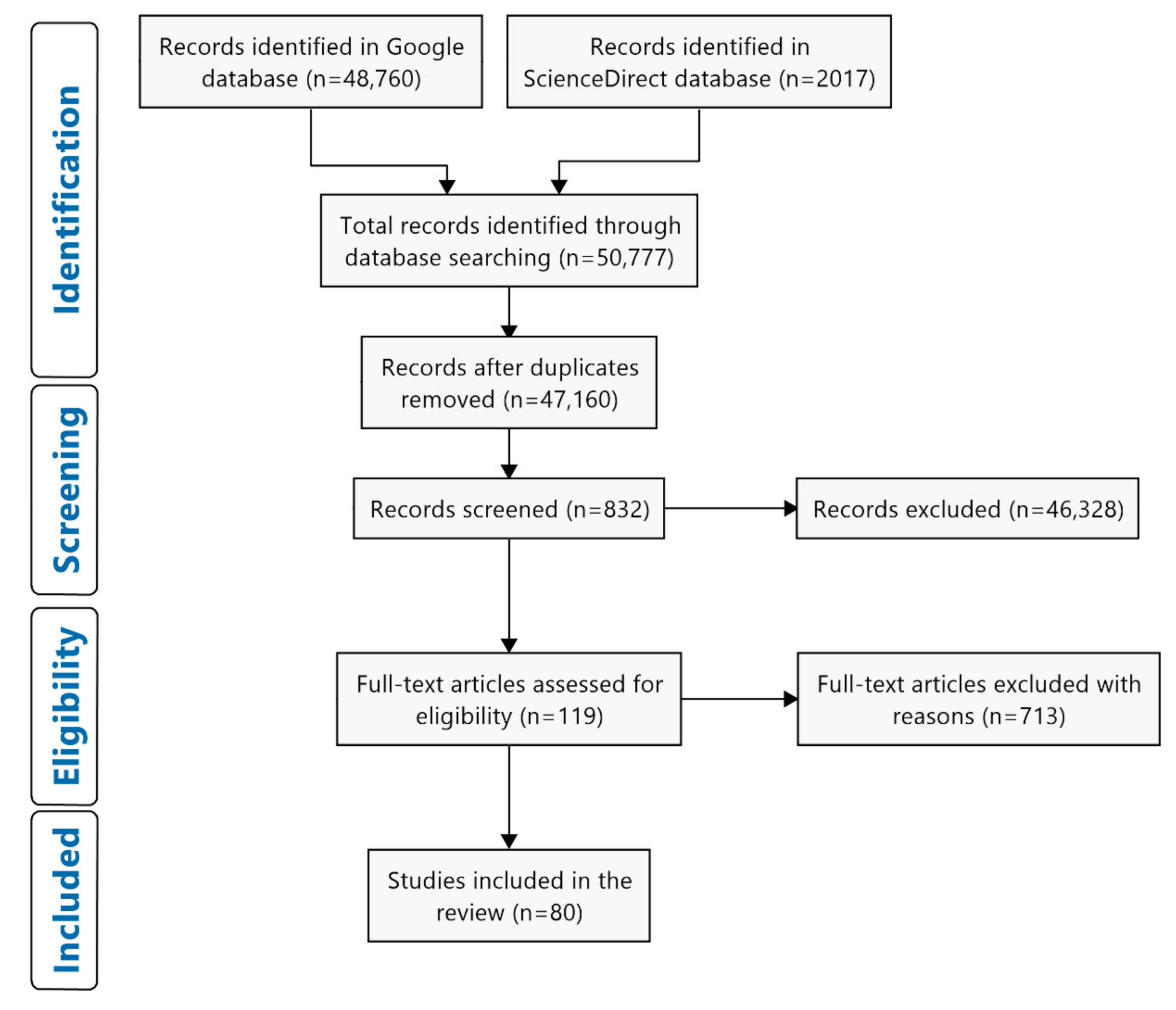
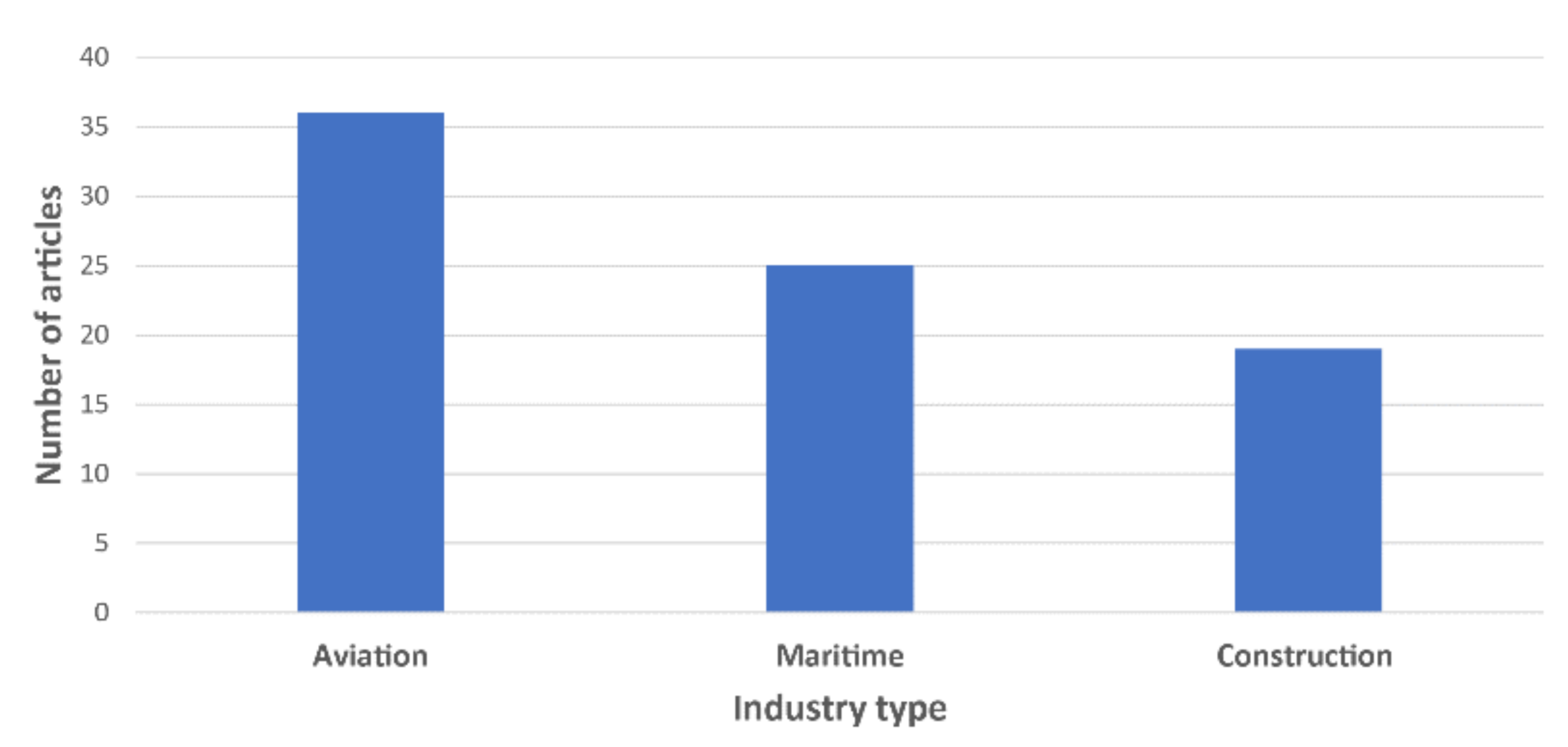
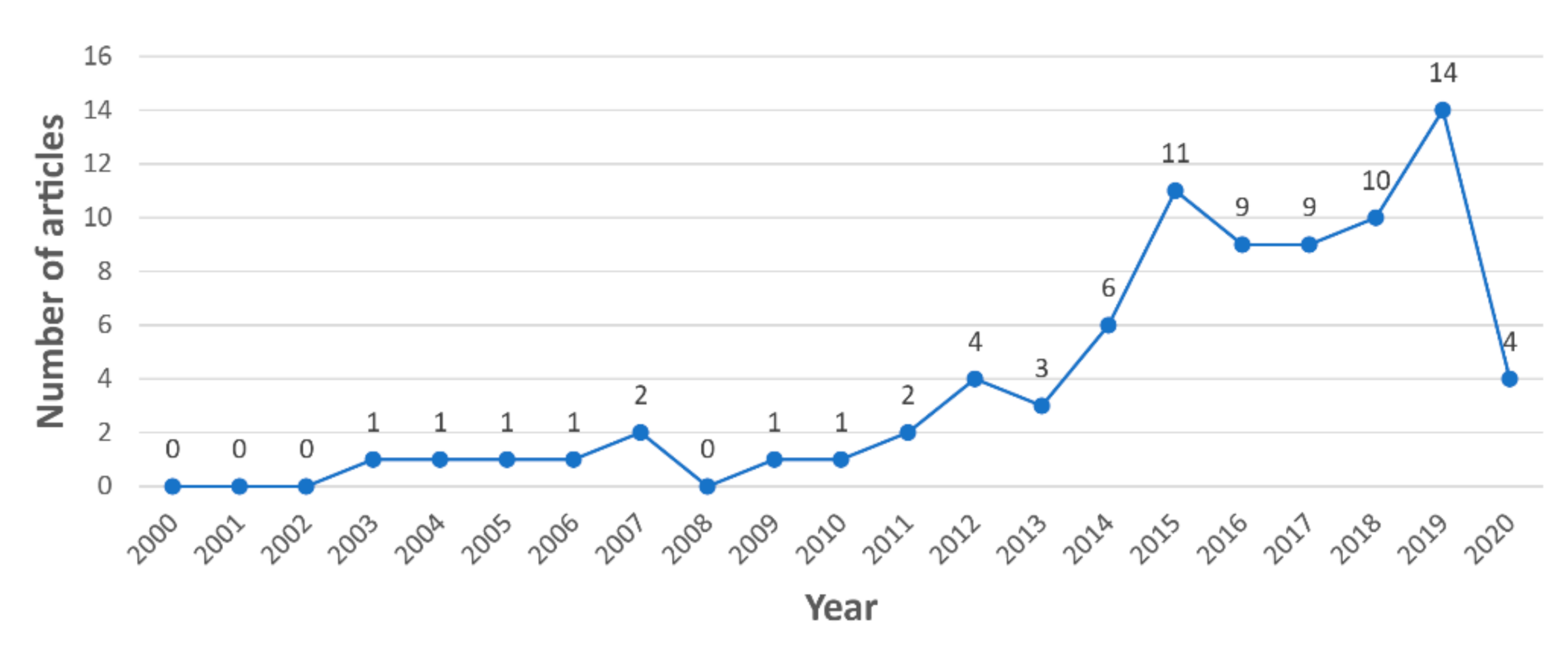
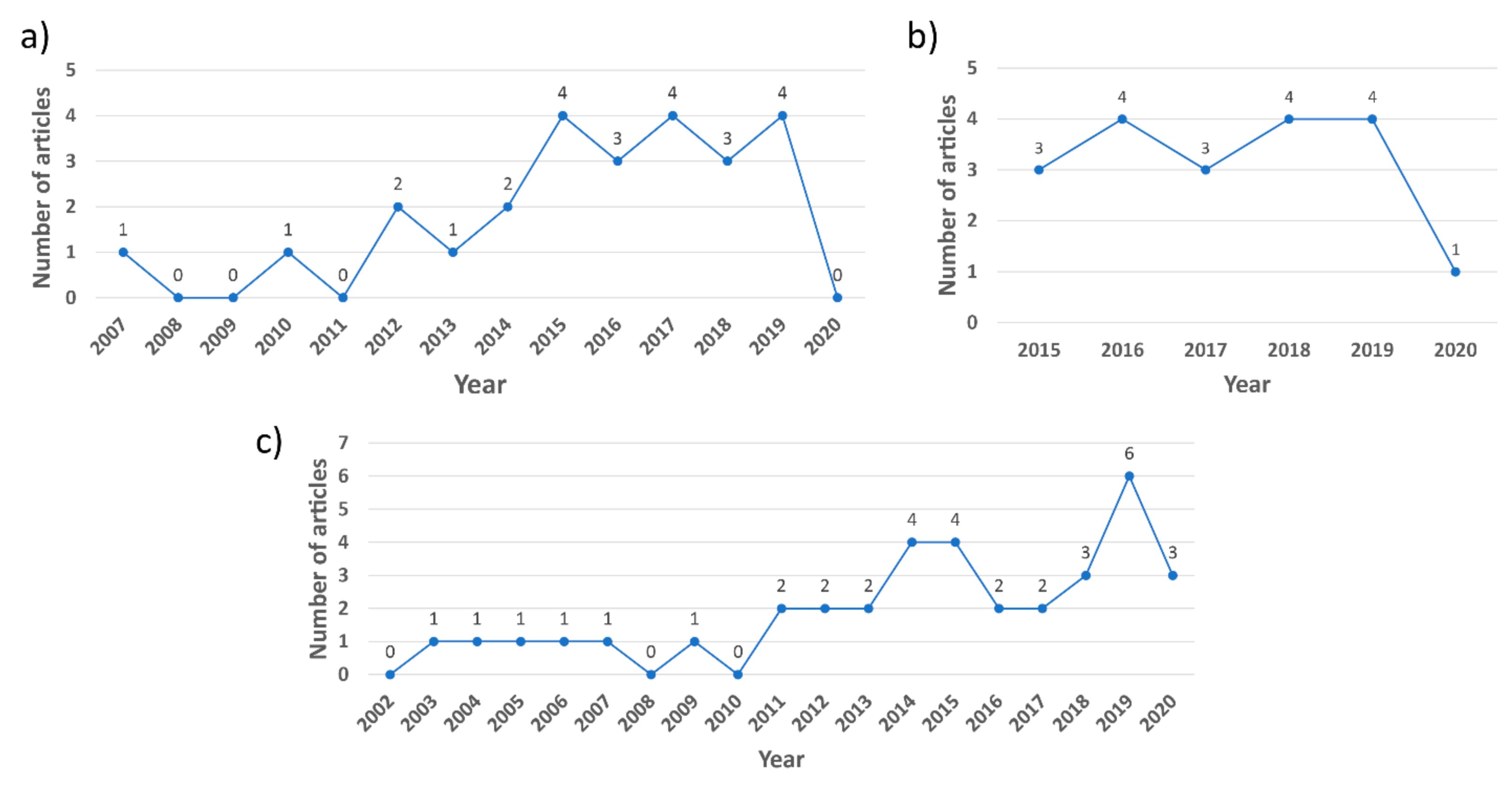
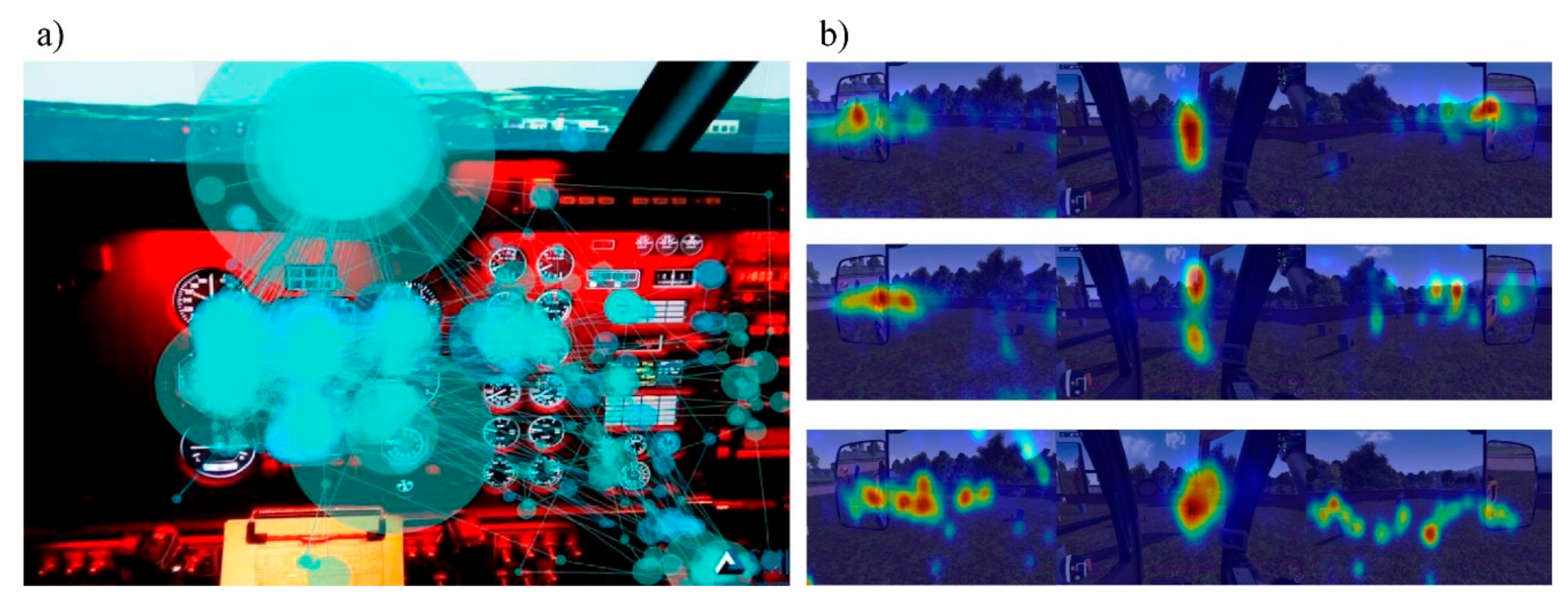
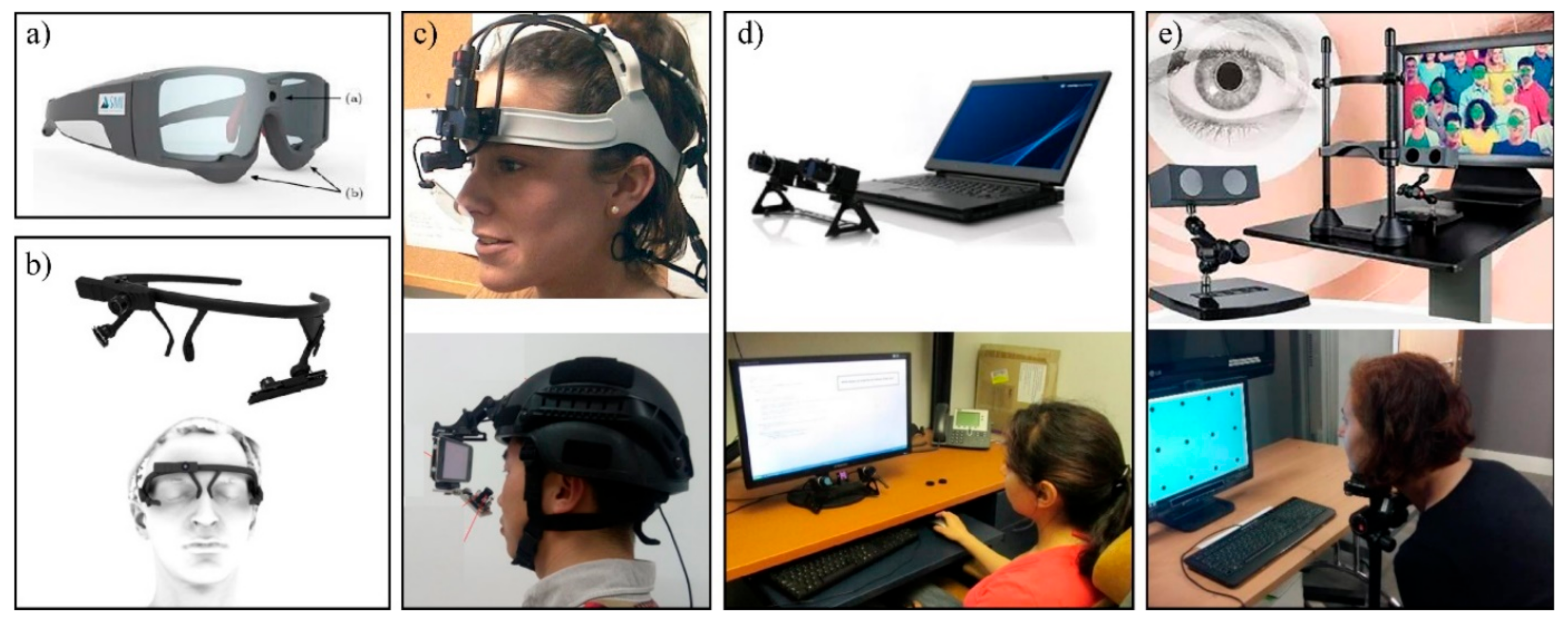
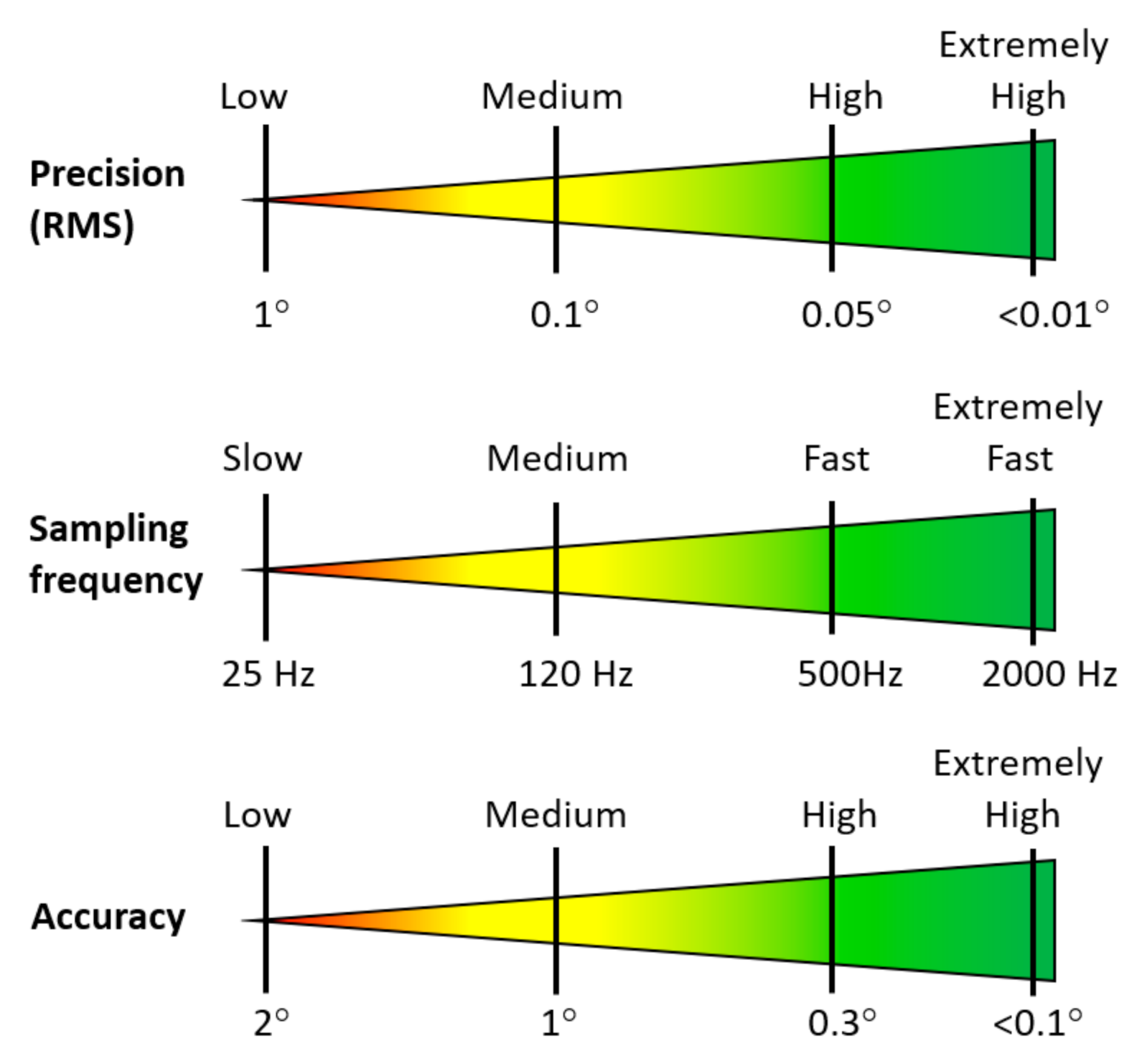
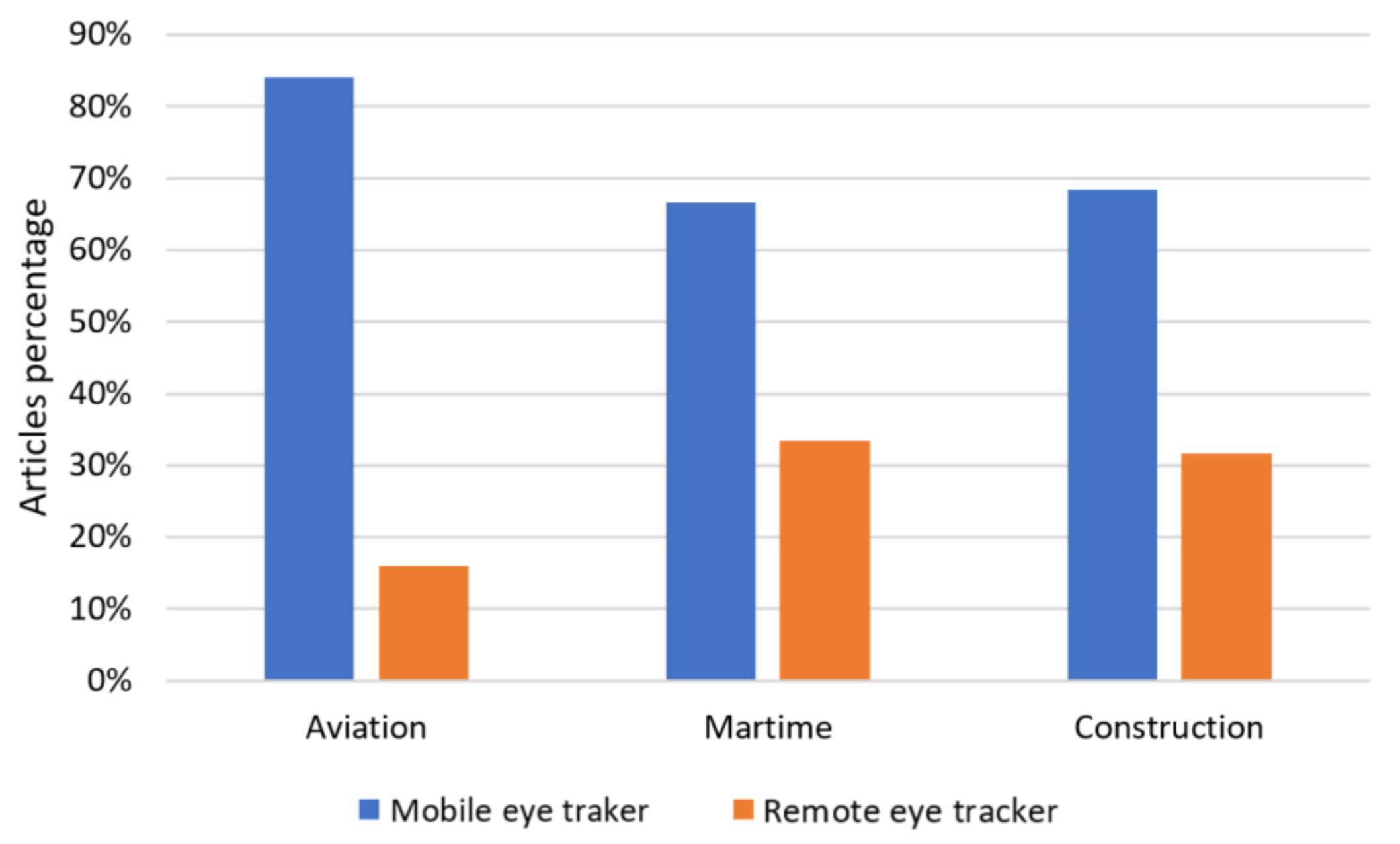
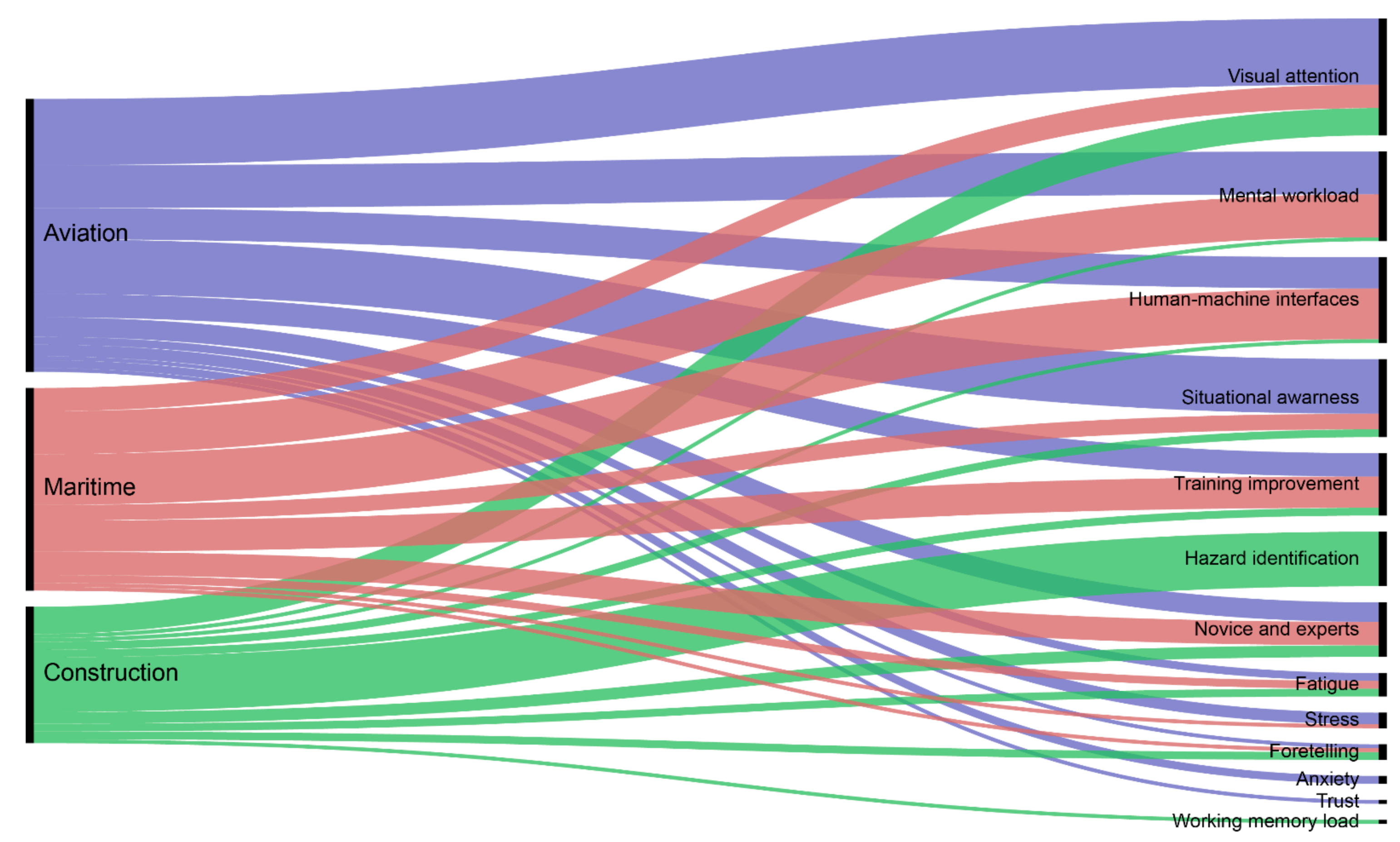
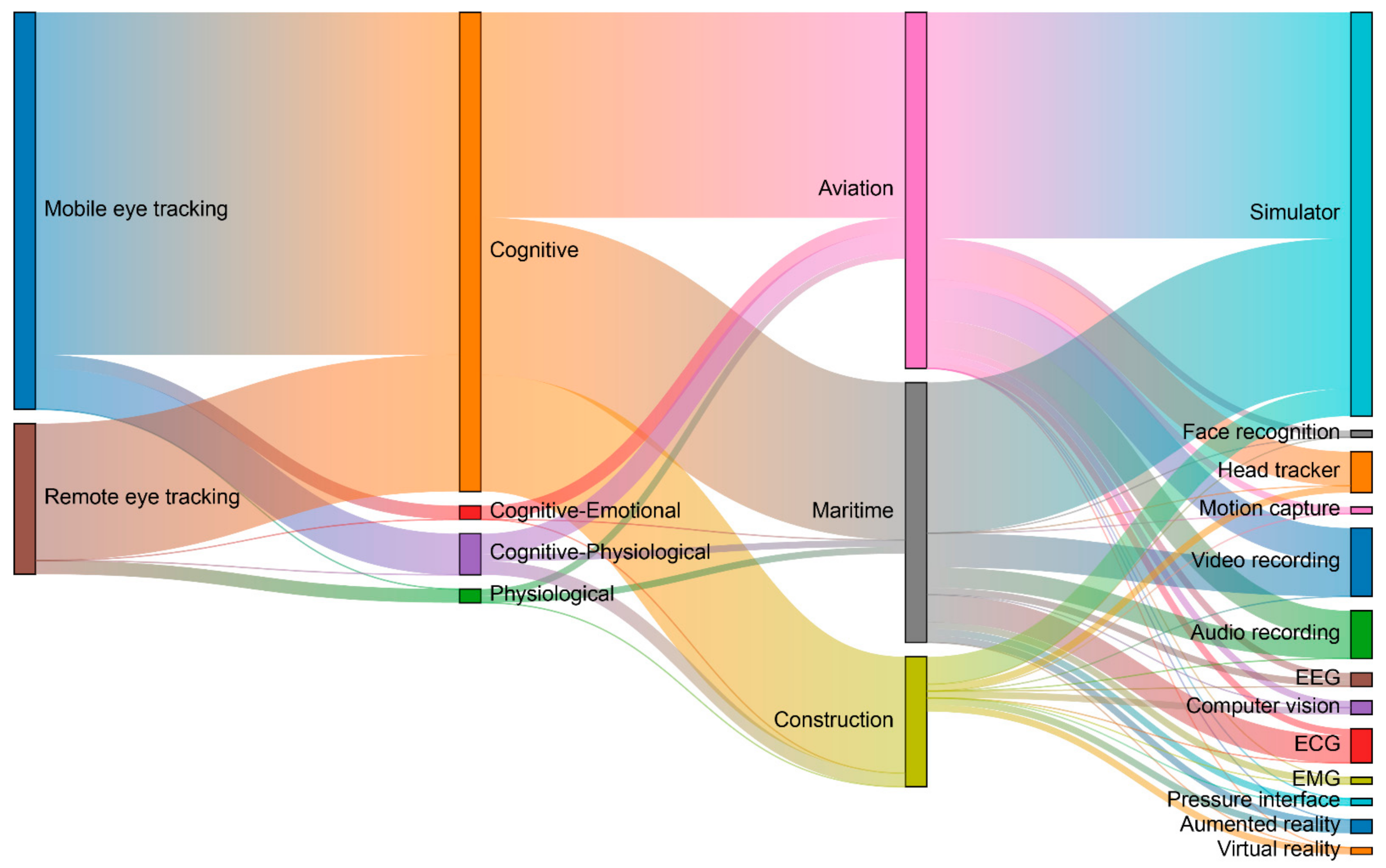
| Database | Records Identified | Total |
|---|---|---|
| Google Scholar | 48,760 | 50,777 |
| Science Direct | 2017 | |
| Duplicates | 3617 | 47,160 |
| Ref | Code | Year | Location | Maritime | Aviation | Construction | Cognitive | Emotional | Physiological | Tech Integration |
|---|---|---|---|---|---|---|---|---|---|---|
| [29] | S1 | 2007 | Sweden | ✔ | ||||||
| [30] | S2 | 2010 | Germany | ✔ | ✔ | |||||
| [31] | S3 | 2012 | Norway | ✔ | ✔ | ✔ | ||||
| [32] | S4 | 2012 | Sweden | ✔ | ||||||
| [33] | S5 | 2013 | Poland | ✔ | ✔ | |||||
| [34] | S6 | 2014 | Norway | ✔ | ✔ | |||||
| [35] | S7 | 2014 | UK | ✔ | ✔ | |||||
| [24] | S8 | 2015 | Italy | ✔ | ✔ | ✔ | ✔ | |||
| [36] | S9 | 2015 | Canada | ✔ | ✔ | |||||
| [37] | S10 | 2015 | Singapore | ✔ | ✔ | ✔ | ||||
| [38] | S11 | 2015 | Canada | ✔ | ✔ | |||||
| [39] | S12 | 2016 | Norway | ✔ | ||||||
| [8] | S13 | 2016 | Italy | ✔ | ✔ | |||||
| [40] | S14 | 2016 | Norway | ✔ | ✔ | |||||
| [41] | S15 | 2017 | Norway | ✔ | ✔ | ✔ | ||||
| [42] | S16 | 2017 | USA | ✔ | ✔ | |||||
| [43] | S17 | 2017 | Norway | ✔ | ||||||
| [44] | S18 | 2017 | Norway | ✔ | ||||||
| [45] | S19 | 2018 | Australia | ✔ | ✔ | ✔ | ||||
| [46] | S20 | 2018 | Norway | ✔ | ✔ | ✔ | ||||
| [47] | S21 | 2018 | Sweden | ✔ | ||||||
| [48] | S22 | 2019 | Singapore | ✔ | ✔ | |||||
| [27] | S23 | 2019 | China | ✔ | ✔ | ✔ | ||||
| [6] | S24 | 2019 | Norway | ✔ | ✔ | |||||
| [49] | S25 | 2019 | Turkey | ✔ | ✔ | |||||
| [50] | S26 | 2003 | USA | ✔ | ||||||
| [51] | S27 | 2004 | USA | ✔ | ✔ | |||||
| [52] | S28 | 2005 | USA | ✔ | ✔ | |||||
| [53] | S29 | 2006 | Sweden | ✔ | ✔ | ✔ | ||||
| [54] | S30 | 2007 | USA | ✔ | ✔ | |||||
| [55] | S31 | 2009 | Germany | ✔ | ✔ | |||||
| [56] | S32 | 2011 | France | ✔ | ✔ | |||||
| [57] | S33 | 2011 | China | ✔ | ✔ | ✔ | ||||
| [58] | S34 | 2012 | USA | ✔ | ✔ | |||||
| [59] | S35 | 2012 | Germany | ✔ | ✔ | |||||
| [60] | S36 | 2013 | USA | ✔ | ✔ | |||||
| [61] | S37 | 2013 | Germany | ✔ | ✔ | |||||
| [62] | S38 | 2014 | The Netherlands | ✔ | ✔ | |||||
| [63] | S39 | 2014 | UK | ✔ | ✔ | ✔ | ✔ | |||
| [64] | S40 | 2014 | UK | ✔ | ✔ | ✔ | ||||
| [65] | S41 | 2014 | Germany | ✔ | ✔ | |||||
| [66] | S42 | 2015 | USA | ✔ | ✔ | |||||
| [67] | S43 | 2015 | Germany | ✔ | ✔ | |||||
| [68] | S44 | 2015 | UK | ✔ | ✔ | ✔ | ||||
| [69] | S45 | 2015 | Germany | ✔ | ✔ | |||||
| [5] | S46 | 2016 | Switzerland | ✔ | ✔ | |||||
| [70] | S47 | 2016 | UK | ✔ | ✔ | |||||
| [71] | S48 | 2017 | France | ✔ | ✔ | ✔ | ||||
| [18] | S49 | 2017 | Hungary | ✔ | ✔ | ✔ | ||||
| [72] | S50 | 2018 | USA | ✔ | ✔ | |||||
| [73] | S51 | 2018 | Germany | ✔ | ✔ | ✔ | ||||
| [74] | s52 | 2018 | UK | ✔ | ✔ | |||||
| [75] | s53 | 2019 | Slovakia | ✔ | ✔ | |||||
| [76] | S54 | 2019 | Germany | ✔ | ✔ | |||||
| [77] | S55 | 2019 | Spain | ✔ | ✔ | ✔ | ||||
| [78] | S56 | 2019 | Slovakia | ✔ | ✔ | ✔ | ||||
| [26] | S57 | 2019 | UK | ✔ | ✔ | |||||
| [79] | S58 | 2019 | Switzerland | ✔ | ✔ | ✔ | ||||
| [80] | S59 | 2020 | Switzerland | ✔ | ||||||
| [7] | S60 | 2020 | China | ✔ | ||||||
| [81] | S61 | 2020 | France | ✔ | ||||||
| [82] | S62 | 2015 | USA | ✔ | ||||||
| [19] | S63 | 2015 | USA | ✔ | ||||||
| [83] | S64 | 2017 | USA | ✔ | ||||||
| [10] | S65 | 2016 | Taiwan | ✔ | ||||||
| [16] | S66 | 2016 | Brazil | ✔ | ||||||
| [4] | S67 | 2016 | USA | ✔ | ||||||
| [23] | S68 | 2016 | USA | ✔ | ✔ | |||||
| [84] | S69 | 2017 | USA | ✔ | ✔ | |||||
| [85] | S70 | 2015 | USA | ✔ | ✔ | |||||
| [86] | S71 | 2017 | USA | ✔ | ✔ | |||||
| [87] | S72 | 2018 | USA | ✔ | ||||||
| [88] | S73 | 2018 | Japan | ✔ | ✔ | |||||
| [89] | S74 | 2018 | USA | ✔ | ✔ | |||||
| [90] | S75 | 2018 | China | ✔ | ✔ | |||||
| [91] | S76 | 2019 | China | ✔ | ✔ | |||||
| [92] | S77 | 2019 | China | ✔ | ✔ | ✔ | ||||
| [93] | S78 | 2019 | USA | ✔ | ✔ | |||||
| [94] | S79 | 2019 | Germany | ✔ | ✔ | |||||
| [95] | S80 | 2020 | China | ✔ | ✔ | ✔ |
| Continent | Location/Region | Number of Articles |
|---|---|---|
| South America | Brazil | 1 |
| North America | USA | 20 |
| Canada | 2 | |
| Europe | Germany | 10 |
| Norway | 9 | |
| United Kingdom | 7 | |
| Sweden | 4 | |
| France | 3 | |
| Switzerland | 3 | |
| Italy | 2 | |
| Slovakia | 2 | |
| Hungary | 1 | |
| Poland | 1 | |
| Spain | 1 | |
| The Netherlands | 1 | |
| Asia | China | 7 |
| Singapore | 2 | |
| Japan | 1 | |
| Taiwan | 1 | |
| Australia | Australia | 1 |
| Middle East | Turkey | 1 |
| Eye Measure | Characteristics | ||
|---|---|---|---|
| Movement Rate | Latency | Relation to Individuals’ Functional State | |
| Fixation | <15–100°/ms | 180–300 ms | Attention, acquisition of information |
| Saccade | 30–700°/s | 20–200 ms | Attention and visual search |
| Change in pupil diameter | 4–7 mm/s | 140 ms | Cognitive workload, information processing, fatigue |
| Blink | 12–15 per min | 300 ms | Attention, stress, fatigue |
| Eye Tracking Device Type | Ideal Application | Advantages | Disadvantages |
|---|---|---|---|
| Mobile | Aviation: Real-world applications and realistic cockpit simulators. Maritime: Real-world applications and realistic bridge simulators. Construction: Real-world applications such as construction site. | • Lightweight. • Can be fitted with a head tracker. • Provides freedom of movement, ideal for a real-world environment or realistic simulators. • Has cameras that records the scene image or environment. | • Sunlight may affect the quality of the data collection. • Gaze mapping is more challenging. • Gaze estimates are typically less accurate than those from remote systems. • Prone to movement, causing drifting. • Requires more recalibrations than remote systems. |
| Remote | Aviation: Ideal for simplified computer-based simulators. Maritime: Ideal for simplified computer-based simulators. Construction: Ideal for computer-based simulators of excavators or cranes. | • Ideal for on-screen studies on PCs, laptop monitors, and simulators. • Provides a good level of experimental control. • High accuracy and data quality. | • Sunlight may affect the quality of the data collection. • Experimental results cannot reflect the realistic and natural movements present in complex scenarios. |
| Remote with head-supporting towers | Aviation, maritime, and construction: when the accuracy and saccade resolution are the most important. For example, detection of micro saccades. | • Minimises artifacts caused by head movements. • Provide the greatest data quality and high level of experimental control. • Ideal when the accuracy and saccade resolution are the most important. • The saccade resolution is two to five times more than remote eye trackers. • Facilitates the calculation of the positions of stimuli on the monitor. | • Sunlight may affect the quality of the data collection. • Further constrains the subject of realistic and natural head movements. |
Publisher’s Note: MDPI stays neutral with regard to jurisdictional claims in published maps and institutional affiliations. |
© 2021 by the authors. Licensee MDPI, Basel, Switzerland. This article is an open access article distributed under the terms and conditions of the Creative Commons Attribution (CC BY) license (https://creativecommons.org/licenses/by/4.0/).
Share and Cite
Martinez-Marquez, D.; Pingali, S.; Panuwatwanich, K.; Stewart, R.A.; Mohamed, S. Application of Eye Tracking Technology in Aviation, Maritime, and Construction Industries: A Systematic Review. Sensors 2021, 21, 4289. https://doi.org/10.3390/s21134289
Martinez-Marquez D, Pingali S, Panuwatwanich K, Stewart RA, Mohamed S. Application of Eye Tracking Technology in Aviation, Maritime, and Construction Industries: A Systematic Review. Sensors. 2021; 21(13):4289. https://doi.org/10.3390/s21134289
Chicago/Turabian StyleMartinez-Marquez, Daniel, Sravan Pingali, Kriengsak Panuwatwanich, Rodney A. Stewart, and Sherif Mohamed. 2021. "Application of Eye Tracking Technology in Aviation, Maritime, and Construction Industries: A Systematic Review" Sensors 21, no. 13: 4289. https://doi.org/10.3390/s21134289
APA StyleMartinez-Marquez, D., Pingali, S., Panuwatwanich, K., Stewart, R. A., & Mohamed, S. (2021). Application of Eye Tracking Technology in Aviation, Maritime, and Construction Industries: A Systematic Review. Sensors, 21(13), 4289. https://doi.org/10.3390/s21134289










